Are you looking for stretches for back or spinal decompression to help alleviate back pain? Maybe you spend most of your day sitting at a desk, driving, or otherwise inactive. Or, maybe you did a workout yesterday that has left your back feeling tight and overly sore.
Whatever the case, this blog will give you the most effective exercises for decompressing your spine, relieving back pain, and getting you back to feeling great – or at the very least, better than you were!
Here’s what we’ll cover:
Section 1: The main causes of spinal compression and back pain
Section 2: The most effective exercises for spinal decompression (photos & follow-along video routines!)
- Spine Mobility Exercises for Spinal Decompression (Immediate back pain relief!)
- Shoulders, Mid-Back (Thoracic Spine), and Neck (Cervical Spine) Stretches for Spinal Decompression
- Stretches to Improve Hip Flexibility for Spinal Decompression & Back Pain Relief
- Core & Hip Strengthening Exercises for Spinal Decompression & Back Pain Relief
- Full Body Exercises to Prevent Spinal Compression and Prevent Back Pain
If you want to learn more about spinal decompression, I highly recommend you check out the first sections! If you’re just looking for the right exercises to get rid of your back pain and decompress your spine, then scroll further down on the page. 🙂
Before we get started, there’s one BIG misconception I want to clear up:
Most people with back pain who are looking to decompress their spine shouldn’t actually be stretching their low-back. Instead, they need to the right exercises and stretches to:
- Create space between the vertebrae of the spine.
- Lengthen, stretch, and increase the flexibility of the muscles attached to the spine.
- Strengthen and improve mobility of the muscles in, surrounding, and working with the spine.
Now let’s get to it!
Part 1: Main causes of spinal compression and back pain
What are the causes of spinal compression? Why is spinal decompression something we need? There are a number of reasons, but it really comes down to this:
We sit too much, we’re not active enough, and we aren’t doing the RIGHT exercises.
Let’s start with that first part.
The #1 Reason: Poor Posture
Let’s face it. Most of us have awful posture. But who can blame you? We spend the majority of our time awake hunched over a computer or phone. We’re forced to sit in traffic – many of us for hours and hours on a weekly basis. Our bad posture is a product of our environment, and this is one of the biggest causes of our back pain, and the need for spinal decompression.
How does poor posture cause spinal compression and back pain?
- Leads to weakness in the core, hips, and back.
- Overstretching of the low-back, which leads to low-back pain.
- Tightness in the hip muscles connecting to the spine (hip flexors, hamstrings, and glutes), which causes back pain.
Long story short – if you have poor posture, you will most likely have back pain on a regular basis. (If you’re wondering, regular or daily pain is the definition of “chronic” pain.)
Reason #2: Lack of activity
Your body evolved to move, not to sit at a desk. And even though sitting and resting is essential to your physical health, it’s not a good idea to do it for 15 hours a day And that’s assuming you spend an hour per day exercising and 8 hours per night sleeping – a generous assumption for most, am I right?
Moving your body is how you keep it feeling good. Even if it’s just going for a walk, that little bit of activity helps you get address the root of back pain at its source. When you minimize activity, you decrease blood flow, prolong muscle recovery, and even lose mental focus.
For some of us, movement can make our back feel even worse – but that doesn’t mean we should avoid movement altogether. Pain is not an indication that we should not move – it’s a signal from our bodies telling us that something is wrong, and that it needs to be fixed. It just means that you have some muscular imbalances that you need to work out in order to move pain-free.
For most of us, that means doing exercises that help to undo the stress of sitting:
- Doing postures/stretches/exercises that reverse your usual posture
- Improving the flexibility and mobility of your hips, core, and spine
- Strengthening your hips, core, and spine
I’ve included a helpful list of exercises (as well as follow-along video routines) at the bottom of this blog to help you address these common issues. But more on that later.
For now, let’s get back to the reasons why you’re experiencing spinal compression.
#3 Reason: Our Exercise Choices
If you don’t exercise, this won’t apply to you. But if you exercise regularly and still have back pain (enough to the point that this blog on spinal decompression looked interesting enough for you to read), then there is most likely a gap in your workout routine.
If you’re already active, you’re doing better than most of the population. (Federal US recommendations for exercise are at least 150 minutes of moderate exercise per week, and recent studies state that only about 1 in 5 Americans actually hit this number. Source: https://www.hhs.gov/fitness/resource-center/facts-and-statistics/index.html)
For you, the problem isn’t your motivation – it’s your decisions regarding what type of exercise to do. This comes down to 2 things:
- Doing the appropriate exercises to restore your body’s natural posture.
- Spending more time on restorative fitness.
Posture-restoring exercises
Let’s cover restoring your body’s natural posture first. Most of us aren’t doing the exercises we need to help restore the natural posture of the body, and we’re thus contributing to imbalances that lead to discomfort, pain, and injury.
If your body returned to normal posture after you stood up, this wouldn’t be an issue – but it doesn’t.
Big Idea: The “strength” your body builds while sitting is the strength it retains when you stand up.
Think about that for a second. That basically means that if you spend most of your time sitting, your body isn’t capable of doing the exercises you want to do from a standing position.
(Work at a stand-up desk? Well, you’re a few steps ahead of the desk chair people, but you’ve also got some imbalances as a result of standing for hours. Our bodies weren’t meant to do that, either. They were meant to MOVE!)
As this relates to your spine – when sitting, the muscles that connect to your spine are shortened and inactive. They get weaker AND tighter as a result of sitting.
Normally, these muscles support your spine, but when they are weak, they are incapable of doing so. This burden is then placed on your lower-back, which is why it hurts all the time –
You’re basically asking your lower-back to do the work that the muscles in your hips and your core should be doing.
So in order to relieve this pressure on your spine – and decompress your spine – you need to:
- Create space and movement in the vertebrae that make up your spine.
- Stretch and lengthen the muscles that connect to the spine (hips, back)
- Strengthen your hips and core.
The right combination of these exercises helps to decompress your spine and get rid of back pain. (Hint: I’ve provided these exercises for you further down on this blog, in picture and video format!)
Now let’s get to the second part of this: Most of us spend too much time doing intense workouts, and not enough time on more restorative-focused workouts.
Spending more time on restorative fitness.
Strength training and cardio are extremely important. HIIT workouts You should be doing both. But it’s incredibly important to include more mobility and maintenance-focused exercise in your current workout routine. If you don’t, you might notice the following:
- Little aches and pains in your back, knees, and shoulders that become more significant, preventing you from completing your workouts or sticking to a routine.
- Excessive soreness & joint pain after your workouts – Not that type of muscular soreness that says “good job on getting that workout done”; this is that muscular soreness that makes it difficult to move around and do what you need to do. And it hurts your joints, too, maybe causing you to reach for anti-inflammatory medicines to deal with the pain.
- Avoidance of certain exercises that tend to make your back or your spine hurt. Maybe you got away with them when you were younger, but as we get older and spend more time at a desk, this loss of flexibility and mobility gives us pains that we didn’t used to have.
If any of the above apply to you, there’s a good chance that you aren’t doing enough restorative exercises to take care of your spine. This typically includes:
- Stretching the hips, spine, and back
- Foam rolling or self-myofascial release techniques to release muscle tightness
- Calming activities to help stimulate the parasympathetic nervous system (our “rest and digest” mode), promoting recovery, the relief of tension, balancing your hormone levels (decreasing your cortisol levels and allowing your testosterone to replenish), and even improving your sleep.
But many people are unaware of the RIGHT stretches to help with spinal decompression, which is what leads to my next reason for the need of decompressing your spine:
Looking For A Program?
If you’re looking to start a yoga routine to lose weight, gain muscles, flexibility, and strength, Man Flow Yoga offers on-demand structured programs that complement your lifestyle and schedule. Sign-up below!
Signup for the FREE 7-Day Challenge
Reason #4: Doing the WRONG stretches
Did you know that stretching your lower-back is exactly the OPPOSITE of what people with back pain or spinal compression should be doing?
Most people assume that the pain you experience in your lower-back can be alleviated by stretching it. In fact, this is exactly what you should NOT be doing.
Want to decompress your spine? Get off your feet. Lay down. (This most likely isn’t going to get rid of the pain on its own though – and it definitely won’t address the root causes of the pain, so make sure to do the other appropriate exercises, too.)
The problem with doing the forward fold (reaching down and touching your toes, i.e. stretching your lower-back – you might have already tried this), is that this is exactly what you’re already doing when you’re sitting at your desk.
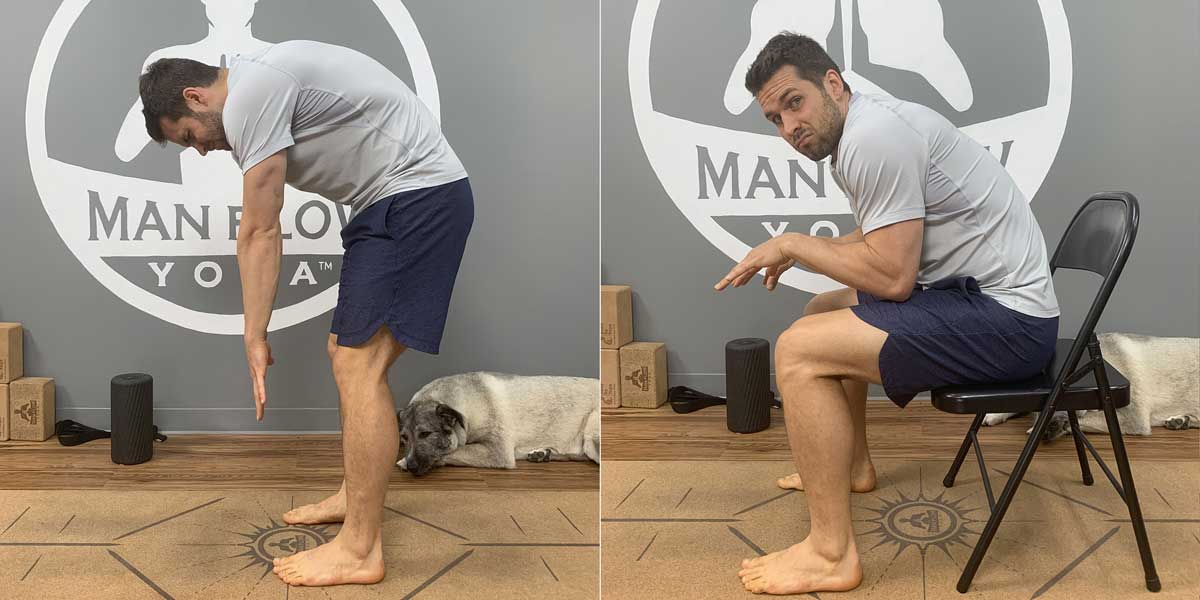 Bad Posture when sitting, bad Posture when stretching
Bad Posture when sitting, bad Posture when stretching
The answer to successfully decompressing your spine, then, is to do exercises that stretch your spine in ways that do NOT mimic sitting with poor posture.
Note: This is exactly why not all yoga can be helpful for office workers. There are too many forward folds, and not enough posture-restoring exercises. For a yoga workout to be effective for office workers, it needs to use exercises aimed at undoing the stress of sitting at a desk, restoring posture, and getting our bodies back to our natural postures.
And that brings us to the next section the blog:
Part 2: The best exercises for decompressing your spine
This is the part you’ve been waiting for! In this section, you’ll learn the best exercises for spinal decompression. I’ll cover:
- Proper technique
- Target areas & benefits
- What you should feel
- Recommended reps & duration
We’ll also cover more than just spinal mobility and spinal decompression. Your body is interconnected, and getting rid of back pain also involves a combination of stretching and strengthening the parts of your body which connect spine, which is why you’ll find exercises for:
- Spinal Mobility Exercises for Spinal Decompression
- Shoulders, Mid-Back (Thoracic Spine), and Neck (Cervical Spine) Stretches for Spinal Decompression
- Stretches to Improve Hip Flexibility for Spinal Decompression & Back Pain Relief
- Core & Hip Strengthening Exercises for Spinal Decompression & Back Pain Relief
- Full Body Exercises to Prevent Spinal Compression and Prevent Back Pain
Ready to get started? Here we go!
The best way to decompress your spine (without specialized equipment only found in physical therapy offices) is to get off your feet, and onto the ground. So the first type of exercises I’ll be showing you are done on the ground, either on your back or on your chest.
Spine Mobility Exercises for Spinal Decompression (Immediate back pain relief!)
The following exercises directly address the spine. You can go step by step through each exercise, or follow along to a video tutorial / follow-along routine below.

1. Happy Baby (or knee to chest)
Technique points:
- Keep your back as flat as possible (don’t let your lower-back come too high off the ground)
- Tighten your abs.
- Pull your knees toward your shoulders and squeeze your hip flexors.
Target areas: Low-back, Inner-thighs/adductors, Hamstrings
You should feel:
- Stretching/lengthening in the inner-thighs and hamstrings
- Release of tension through the lower-back
- abdominal / core engagement
Recommended reps & duration: 45-90 seconds, 1-2 reps, can do 1-3x daily
Modifications: Use knee to chest to start.
2. Reclined Twist
Technique points:
- Keep chest pulling toward ground (don’t let your chest puff out)
- Hips face sideways; chest faces up
- Both shoulders flat on ground (do the best you can)
Target areas: Low-back, outer-hips, possibly chest
You should feel:
- Stretching in the outer-hips
- Release through the lower-back
- Possible stretching through your chest
Recommended reps & duration: 30-60 seconds, 1-2 reps, can do 1-3x daily
3. Child’s Pose
Technique points:
- Keep butt down and back near heels.
- Keep your back as flat as possible (avoid rounding).
- Engage abs to help lengthen spine.
Target Areas: Low-back, mid-back, hips, shoulders
You should feel:
- Stretching through the low-back and mid-back.
- Stretching through the chest and shoulders.
- Engagement through the abdominal area.
Recommended reps & duration: 45-90 seconds, 1-2 reps, can do 1-3x daily
Modifications: Use block if your head does not rest on the ground.
Use the above exercises on a daily basis if you’d like! They each help to decompress your spine and get rid of back pain, but using them on their own won’t solve the issue for good.
If this first group of stretches doesn’t help, then you might need to target a different area of your spine. Most people have low-back related spinal compression, but it’s possible that yours is caused in the mid and upper-back. (This is very common in desk workers.) That’s why this next set of exercises focuses on the mid-back (thoracic spine), neck (cervical spine), and shoulders.
Shoulders, Mid-Back (Thoracic Spine), and Neck (Cervical Spine) Stretches for Spinal Decompression
Your thoracic spine is typically very tight, and all of the texting and computer screen gazing you do can cause your cervical spine to have similar issues. Here are 3 stretches you can use to address your thoracic & cervical spine-related spinal compression issues:

1. Puppy Pose
Technique points:
- Keep your butt above or slightly behind your knees.
- Pull your hips away from your shoulders. (Think of stretching your armpits.)
- Keep your arms lightly (or firmly) engaged.
Target Areas: Shoulders, Mid-Back, Upper-Back, and Chest
You should feel:
- Stretching in the shoulders & armpit area.
- Stretching through the mid-back and upper spine.
Recommended reps & duration: 45 – 90 seconds, 1-2x daily
Modification: Using block as support for head.
2. Child’s Pose with Thoracic Twists
Technique points:
- Keep your hips back toward your heels; lumbar spine should be neutral.
- Engage the muscles in your shoulder blades.
- Use your inhale to lengthen your spine; use your exhale to deepen the twist.
Target Areas: Shoulders, Mid-back (thoracic spine), Upper-back, Neck (Cervical spine)
You should feel:
- Muscle engagement between the shoulder blades.
- Neutral lower-back (no stretching below the mid-back).
- Opening through the chest, shoulders, and upper-back.
Recommended reps & duration: 45 – 90 seconds, 1-3x daily
3. Supported Cervical Spine Decompression
Technique points:
- Press the back of your head into your hands.
- Lean back enough so the weight of your head is in your hands (not in your neck).
- Lightly pull your head upwards to lengthen your spine.
Target Areas: Cervical Spine, Shoulders, Upper-Back, Mid-Back
You should feel:
- Engagement in the front of your neck.
- Stretching / release in the back of your neck.
- Stretching through your chest and shoulders.
Recommended reps & duration: 45-90 seconds, 1-2x daily
Modification: Do this lying down instead, resting on a foam roller on the mid-back.
These exercises treat the symptoms of spinal compression and back pain, but they don’t treat the source. That’s why I’ve added more exercises (and videos!) to this blog, to help you get to the source of your spinal compression, and get rid of back pain for good – as long as you’re doing the exercises consistently!
The next set of exercises include stretches to help with the flexibility of the areas connected to your back and spine – the hips.
Stretches to Improve Hip Flexibility for Spinal Decompression & Back Pain Relief
We might tend to think of the body as individualized compartments, but in reality, your body is totally interconnected. One area affects the other. If there is tightness, weakness, or inactivity in one part of your body, it will affect many other parts of your body.
These exercises increase the flexibility (and even the strength) of the hips, which reduces pressure on the lower-back, helping to decompress your spine.
More so than just targeting the hips at random, I’ve specifically selected these exercises because they also help with posture. Poor posture is a major factor in spinal compression, so it’s important that we do exercises that help us practice GOOD posture, instead of reinforcing bad posture.
Doing these exercises helps to eliminate pain, discomfort, or tightness in the low-back. After doing these, you will be able to move and exercise without pain in your back.

1. Low Lunge/High lunge
Technique points:
- Keep your low-back neutral. Bend back knee as needed to achieve this.
- Lightly squeeze legs toward one another.
- Maintain upright posture by lifting ribs away from hips.
- Separate your feet far enough to feel stretch in front of hip.
Target Areas: Hip flexors (stretching); glutes, core, and thighs (engagement/strengthening)
You should feel:
- Stretching in your hip flexors; the front of your back hip.
- Engagement through your abs, hips, and thighs.
- Length through your lower-back (no excessive arching/extension in lumbar spine).
Recommended reps & duration: 45 – 90 seconds, 1-3x daily
Modification: Bend your back knee is your lower-back is pinched or arching.
2. Pigeon (Figure 4)
Technique points:
- Externally rotate hip of stretching leg so inner thigh is facing you.
- Keep hips squared.
- Focus on your hips, not on the knee.
Target Areas: Outer thighs, glutes, hip flexors (maybe)
You should feel:
- Stretching through the glutes and hips.
Recommended reps & duration: 45-90 seconds, 1-2x daily
Modification: Use figure 4 if pigeon is not happening for you today.
Bonus: Use a wall for a more relaxed version!
3. Reclined Strap Stretches
Technique points:
- Keep hips flat on the ground
- Keep abs lightly engaged, spine neutral.
- Bend your knee as necessary.
Target Areas: Hamstrings, Inner Thighs/Groin (Adductors), Outer Thighs/Quadriceps (Abductors)
You should feel:
- Stretching in the backs, outsides, and insides of your legs.
- NO pain or discomfort in the back.
Recommended reps & duration: 45-90 seconds at each “station”, up to 1-2x daily.
Now that your hips are more flexible, the muscles have lengthened and there is less pulling on the spine. Your back should be feeling much better, and you’ll now be able to do more exercises to help strengthen and address the root cause of your back pain.
Note: For some of the exercises I’m about to show you, you might not have been able to do them before while your spine was compressed and your back was in discomfort. The stretching exercises and postures I’ve showed you so far thus help to prepare your body for more exercise – and pain-free, at that!
The spine and hips are now mobile, but those are still mostly bandaid treatments. The real cure comes from building strength on top of this mobility, and that’s exactly what I show you in this next set of exercises!
Core & Hip Strengthening Exercises for Spinal Decompression & Back Pain Relief
If you have pain, discomfort, or instability in a particular area, you want to look at the opposite of that area (aka the antagonist muscle group) to get to the source of the issue. In the case of your spine, we need to work on the strength of your core.
Your core is not just the top layer of your abs – it includes all of the muscles from your mid-thighs, up through your hips, and all the way to your ribs. This area includes your abs, but also includes hip flexors, glutes, adductors, abductors, obliques, and many other muscle groups.
This may sound like a lot, but in reality it just takes a few of the right exercises to build strength in the muscles of this area, and in so doing reduce strain and pressure on the back, to help with decompressing the spine.

1. Hands to Thighs
Technique points:
- Knees directly over hips.
- Hands pressing into thighs; thighs pressing into hands
- Spine neutral; not arched. Neck relaxed.
Target Areas: Hip flexors, core, transverse abdominals, abs
You should feel:
- Muscle engagement through the hip flexors and abs.
- A release of tension in the lower-back.
- Consistent breathing (not holding your breath).
Recommended reps & duration: 30-60 seconds, 1-3x daily
2. Donkey kicks with neutral/rounded spine
Technique points:
- Focus on the engagement of your glutes. Drive your heel up as high as possible with your leg bent.
- Keep your spine neutral or rounded; not arched.
- Do the reps very slowly.
Target Areas: Glutes, hamstrings
You should feel:
- Maximum muscle engagement through the glutes and hamstrings.
- Tightening through your abdominal area to prevent arching of the spine.
Recommended reps & duration: 5-10 slow controlled reps, 1-2 sets per day
Modification: If you have blocks, they can make this exercise easier.
3. Plank
Technique points:
- Squeeze your hands and your feet toward one another.
- Keep your body straight; avoid letting your stomach collapse.
- Maximum muscular engagement through thighs, hips, and core.
Target Areas: Core, hips, thighs, shoulders, arms, chest, upper-back – FULL BODY!
You should feel:
- Muscular engagement through your hips, thighs, core, shoulders and upper-back.
- Maximum core engagement by pulling your belly button up and in, and squeezing your hands and your feet toward one another.
- No tension through the neck.
Recommended reps & duration: 30-90 seconds, 1-3x daily
Modification: Keep knees on ground if this is too challenging with knees up.
4. Cobra
Technique points:
- Tops of feet pressing into the ground.
- Thighs squeezing toward one another, knees lifted.
- Belly button pulling up and in; pubic bone facing the floor.
- Hands and elbows pulling back toward hips; shoulder blades squeezing toward one another.
- Top of head pressing forward to lengthen the body.
Target Areas: Hips, Thighs, Core, Erector Spinae, Mid-Back – Full Body
You should feel:
- Total body engagement from the tips of your toes through the top of your head.
- Muscle engagement in hips, thighs, and core.
Recommended reps & duration: 20 – 45 seconds, 1-3x daily
5. Reclined Twists
Technique points:
- Use your abdominal strength to bring your legs back to the middle.
- Try to keep your shoulders flat on the ground.
- Keep spine neutral.
Target Areas: Core, Low-back
You should feel:
- Stretching/release in the low-back (lumbar-spine).
- Strengthening / muscle engagement in your core (obliques and tranverse abdominals).
Recommended reps & duration: 5-10 reps per side, 1-2x daily
Do these exercises on a regular basis, MOVE more throughout the day, and you can say goodbye to spinal compression for good. Use these exercises daily if you can!
Want more? Here’s a bonus exercise for spinal decompression.
This first video is from a YouTube video I shared a few years ago. It goes through a couple of minutes of explaining the importance of spinal decompression, and then shows you the proper technique. You’ll need a pull-up bar for it.
If you don’t quite have the strength to hang from a bar for 30-60 seconds, then you can put your feet on the ground and lightly support yourself using your legs. The more weight you can take out of your lower-body, the less stress you’ll have on your spine.


Pull-Up Bar Hang / Monster Band for Spinal Distraction and Decompression
Technique points:
- Take as much weight as possible out of your lower-body.
- Allow your back to release.
- Keep a tight grip, but allow your shoulders to relax up near your ears.
Target Areas: Spine (lumbar, thoracic, and cervical), Shoulders, Arms, and Chest
You should feel:
- Stretching through the shoulders and chest.
- Release/lengthening through the entire spine (from cervical down to lumbar).
- Muscle engagement/strengthening through the forearms, arms, and lats.
Recommended reps & duration: 30 – 90 seconds, 1-3x daily
We’re almost getting to the end of this blog, but I’ve got one more set of exercises to share with you.
So far, you’ve learned exercises to help relieve back pain by decompressing your spine, but I also want to show you some more exercises to help PREVENT spinal compression and back pain from occurring in the first place.
Full Body Exercises to Prevent Spinal Compression and Prevent Back Pain
These include certain full-body movements you’ll want to do a regular basis (at least 3x per week) to ensure your back pain stays away for good. If you don’t do them on a regular basis, your spinal compression will eventually come back.
Here are 5 very simple exercises I recommend you do on a regular basis (every other day) to keep your spine decompressed and feeling great!

1. Supine Bicycle
Technique points:
- Focus on lifting your chest; not craning your neck.
- Squeeze your knee toward your shoulder.
- Squeeze your elbow toward your knee (it doesn’t have to touch).
Target Areas: Hip flexors, core, mid-back, low-back
You should feel:
- Strengthening through your core, hip flexors, and mid-back.
- Stretching through the low and mid-back.
- NO straining in the neck (Lift your chest using your core strength, instead!)
Recommended reps & duration: 45-90 seconds, 1-2x daily
2. High Lunge
Technique points:
- Knee over your ankle in your front foot.
- Legs lightly squeezing toward one another.
- Stretching through the hip flexors in your back leg.
- Ribs lifted away from the hips; upright posture.
Target Areas: Hip flexors (stretch), hips, glutes, thighs, core (engagement)
You should feel:
- Stretching in the hip flexors.
- Strengthening/muscle engagement in the hips, glutes, thighs, and core.
Recommended reps & duration: 45 – 90 seconds, 1-2x daily
3. Standing Side Bend
Technique points:
- Focus on height and depth (not just depth).
- Keep your hips and core engaged the entire time.
- Push down through feet and get as tall as possible.
- Keep spine neutral (avoid sticking your butt out behind you).
Target Areas: Hips, Core, Shoulders
You should feel:
- Stretching through the sides of your body and shoulders.
- Engagement through the hips, thighs, and core.
Recommended reps & duration: 30-60 seconds, 1-2x daily
4. Chair Pose
Technique points:
- Weight in your hips; not in your knees.
- Back flat, abs engagement.
- Big toes touching, heels an inch apart, and thighs squeezing together.
Target Areas: Hips, Core, Spine
You should feel:
- Strengthening through hips, thighs, and core.
Recommended reps & duration: 30-60 seconds, 1-3x daily
5. Standing Forward Fold
Technique points:
- Keep the front of your torso long; use a block or bend your knees as necessary.
- Squeeze the fronts of your thighs and your abs.
- Lean slightly forwards, keeping weight evenly balanced in your feet.
Target Areas: Hamstrings & calves (stretching), hip flexors, thighs, and core (strengthening)
You should feel:
- Stretching through the back of your body (mainly through calves and hamstrings, but also through mid and upper-back.
- Strengthening through the front of your body – core, hip flexors, & thighs.
Recommended reps & duration: 30-45 seconds, 1-2x daily
Modification: Bend knees or use a block to bring the ground up to you if you notice your hamstrings are extremely tight or your back is rounding.
And that’s it for the exercises… as well as this blog!
Conclusion: Spinal compression is mainly a direct result of our sedentary (inactive) lifestyle, combined with a lack of posture-restoring and recovery-focused exercise.
Decompressing your spine comes down to doing the appropriate exercises, targeting not just your spine, but also your upper-back and shoulders, hips, core; and building strength and flexibility in your entire body.
You can use certain exercises to decompress your spine and get rid of back pain, as well as incorporate a more comprehensive approach to your exercise in order to prevent spinal compression and back pain from occurring in the first place.
Thank you for reading this blog! If you enjoyed it or have something to add, I encourage you to leave a comment in the description below. (Note: If you’re not already registered on our website, you’ll have to wait for us to approve the post before it’s shown.)
Take my FREE 7-Day Intro!
Want to see how you can incorporate yoga into your daily routine? Get 7 comprehensive lessons you can use to start building strength, increasing flexibility, and improving your overall fitness today. You’ll feel the difference within your first few days! Click here to learn more and sign up
Get Phase 1 of my Bulletproof Your Back Program – FREE!
If you are looking for a program to help with spinal decompression and getting rid of back pain for good, try my Bulletproof Your Back Program! You’ll get Phase 1 for FREE – no email address required. Click here to view the program on my website and get started today!
About the author, Dean Pohlman, Founder & CEO of Man Flow Yoga, Author of Yoga Fitness for Men, Expert on Yoga Fitness for Men.
Looking for non-spiritual, yoga for men workouts?
Learn More About Man Flow Yoga and how it can help you with your fitness goals:
 Join Today for Instant Access!
Join Today for Instant Access!
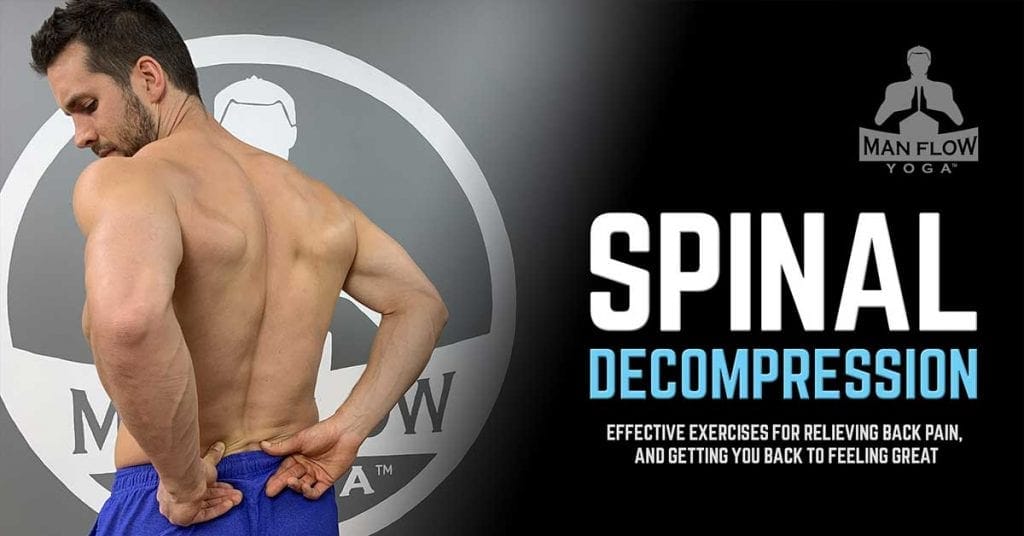
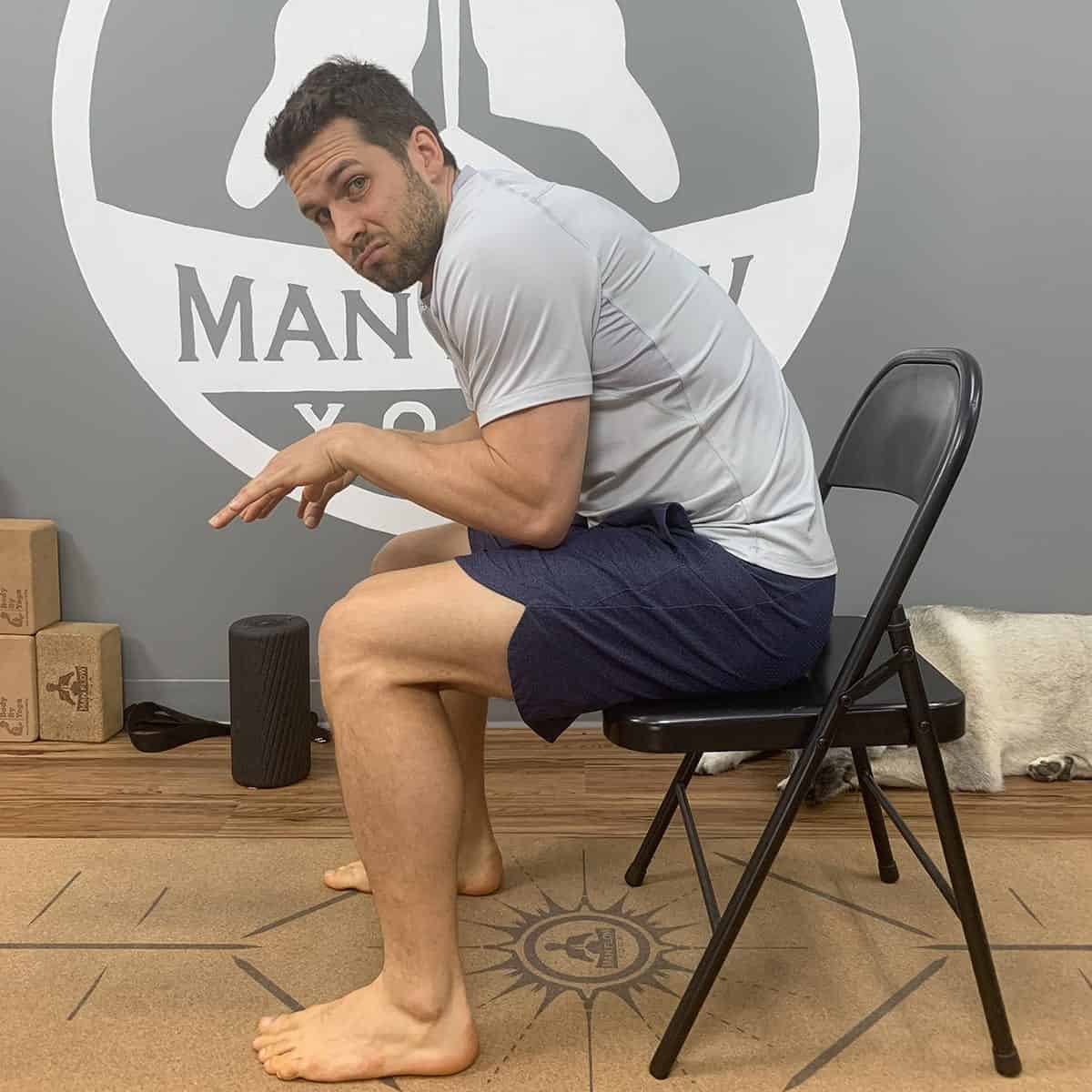
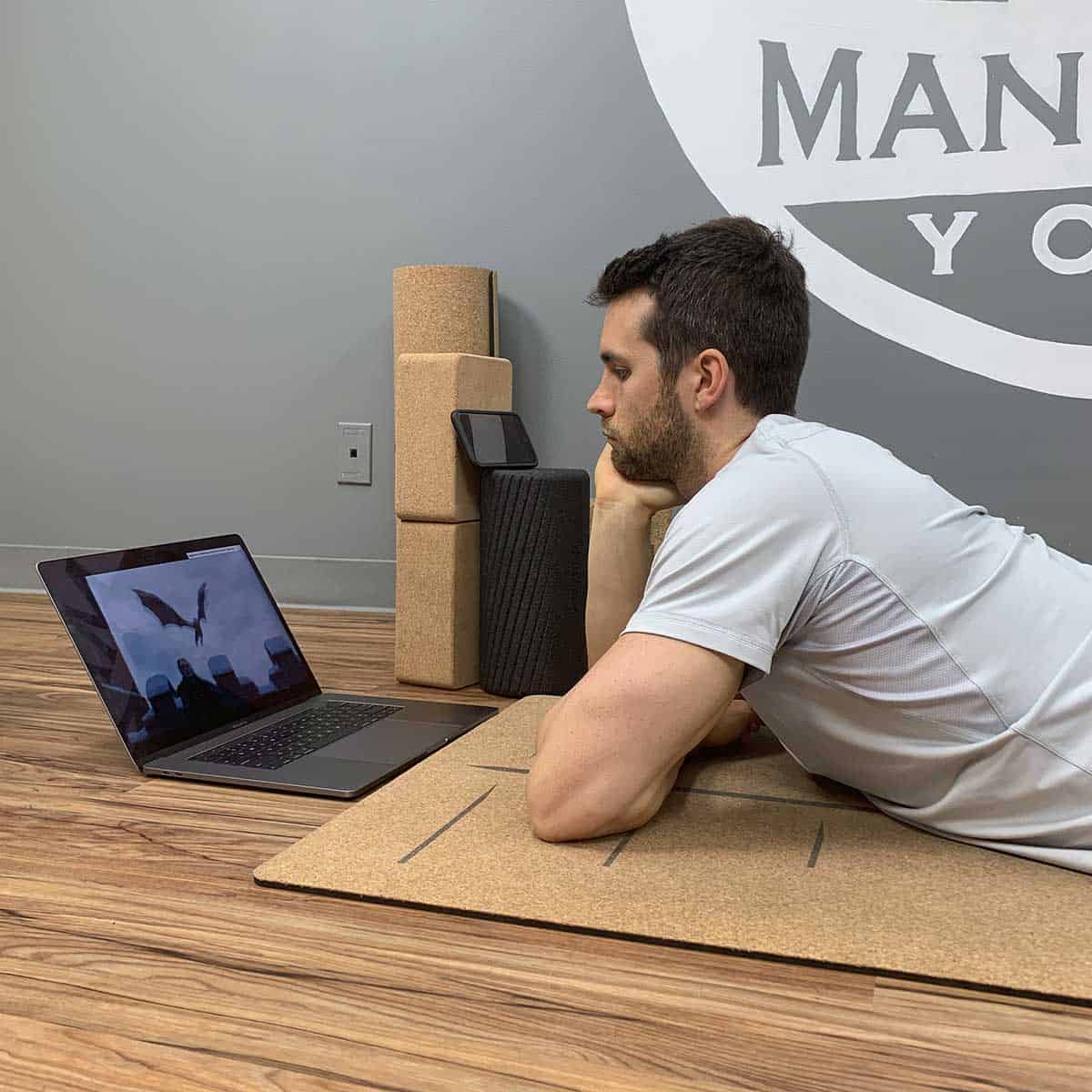
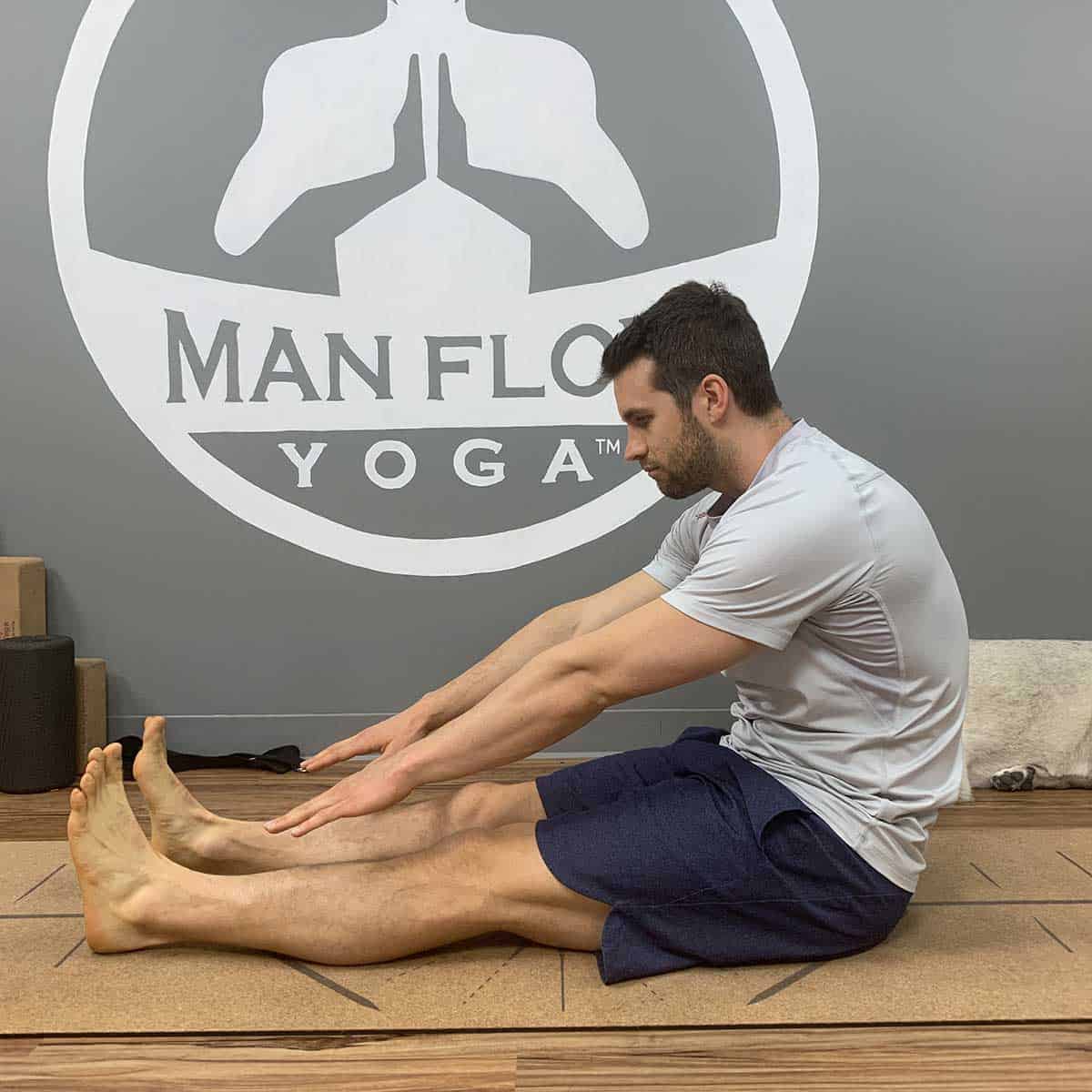
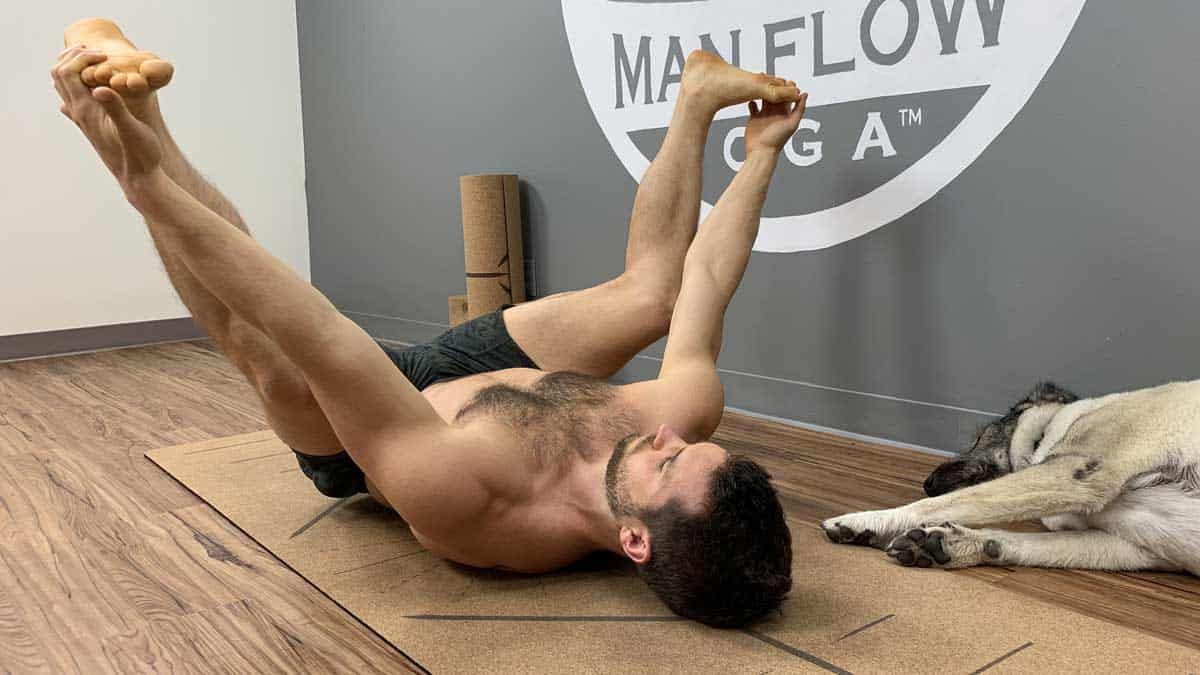
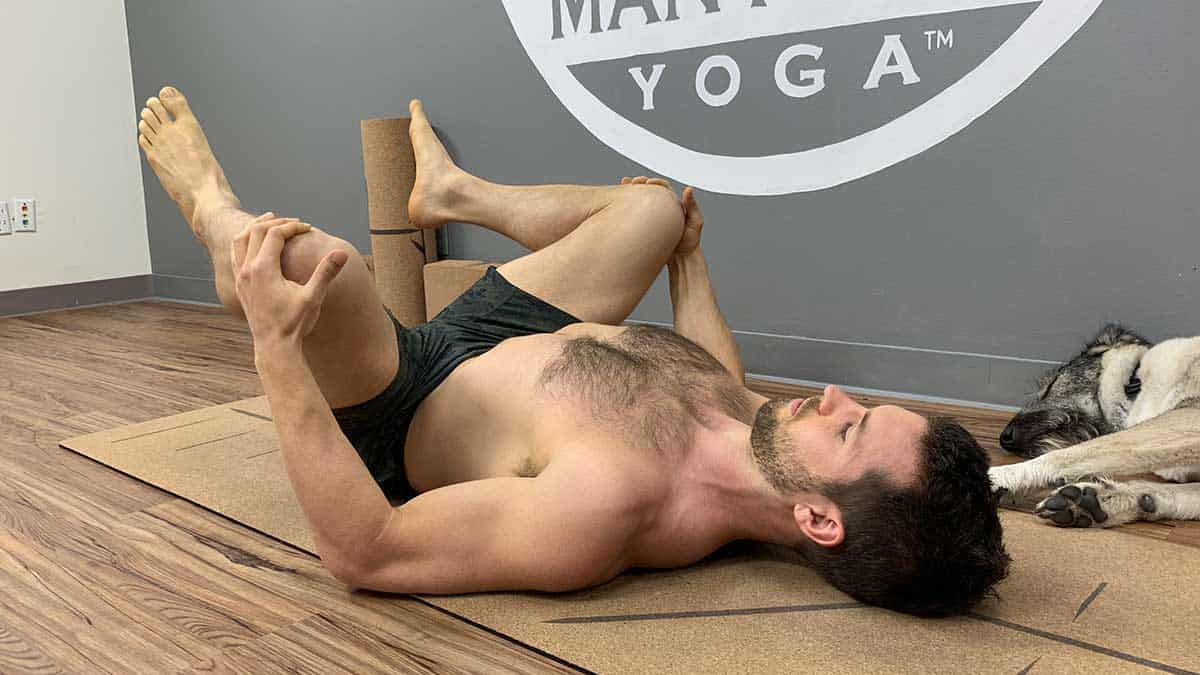
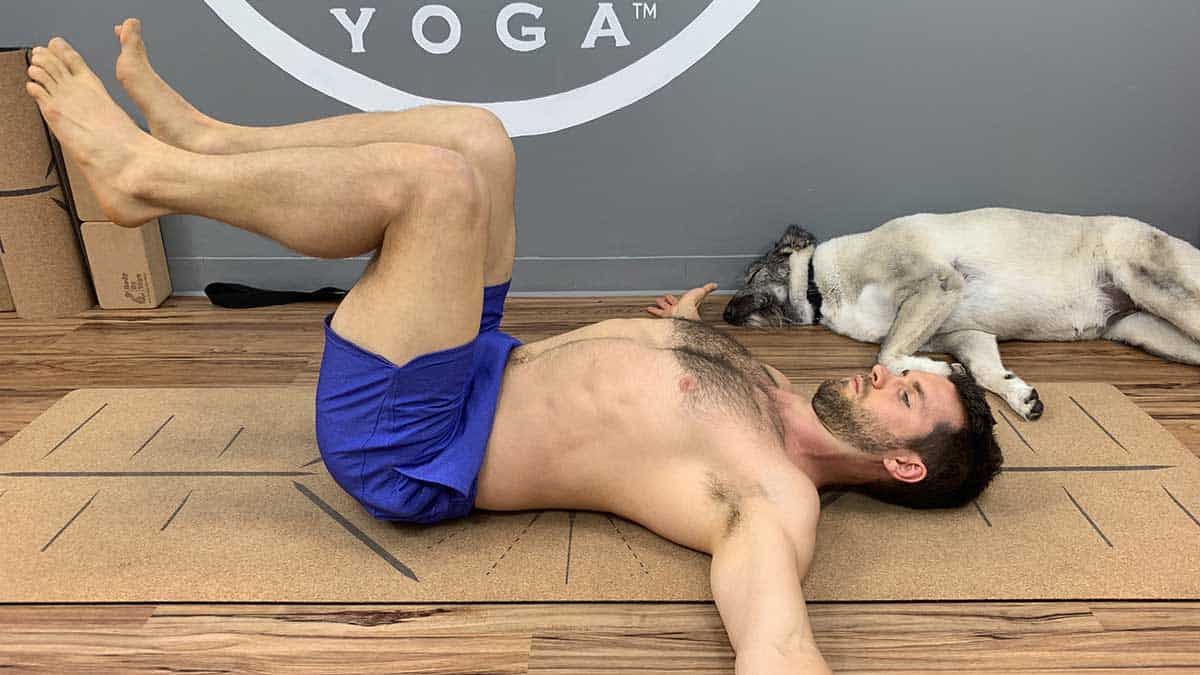
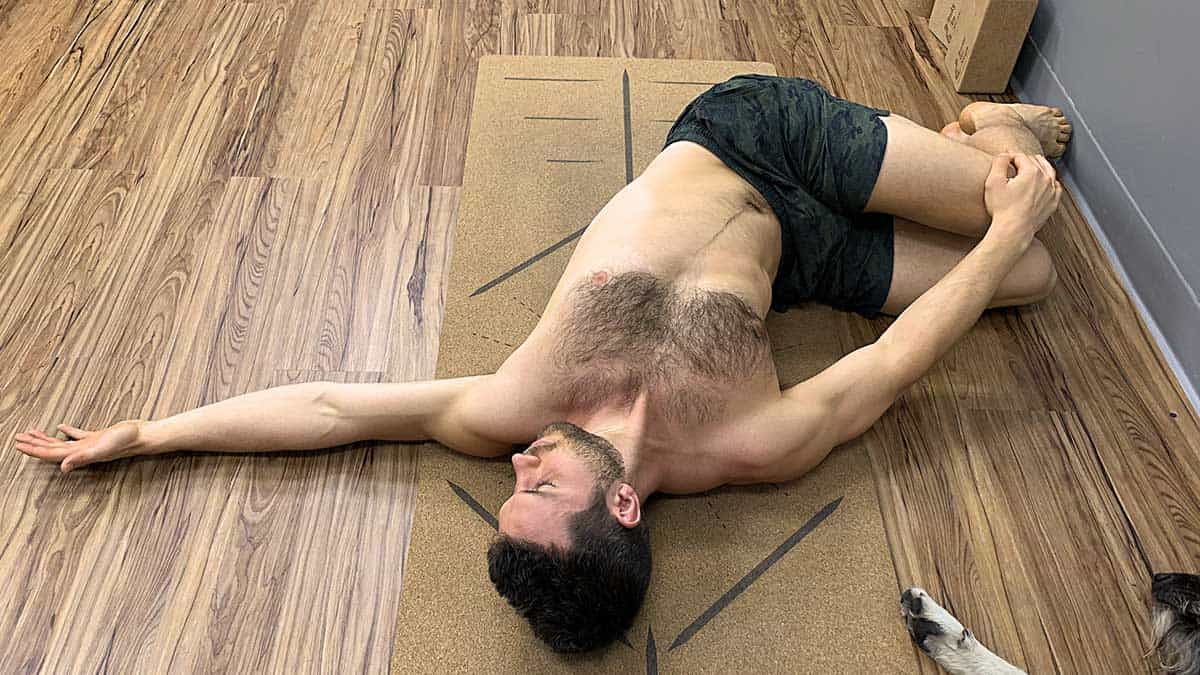
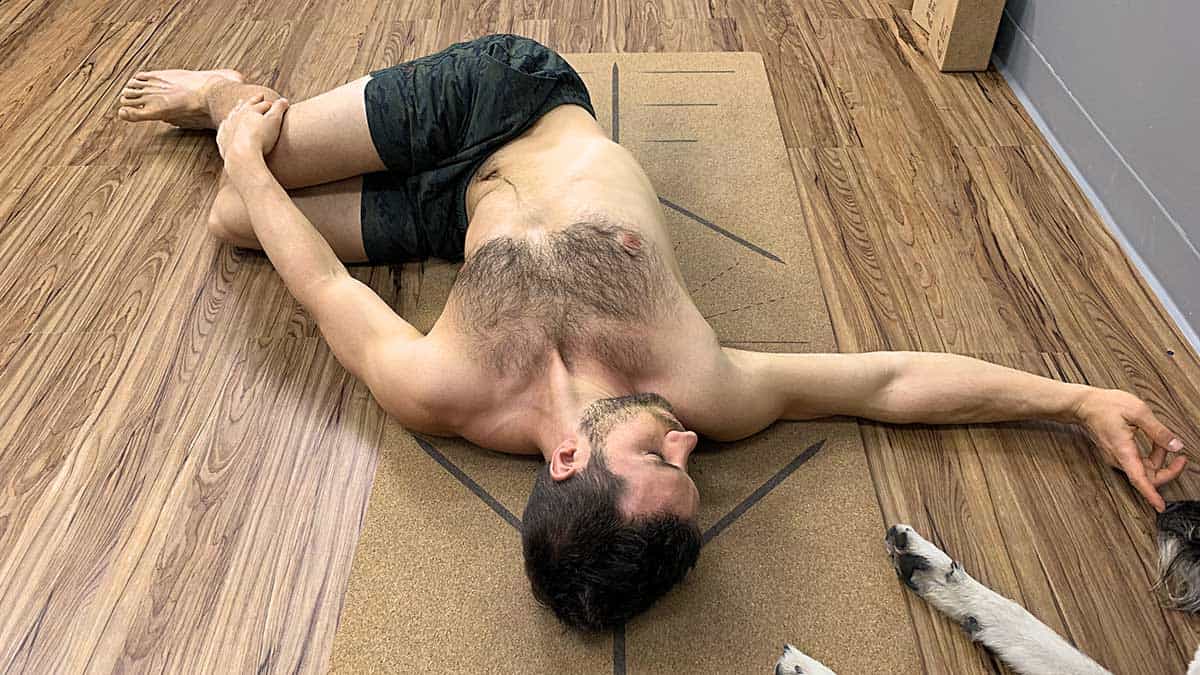
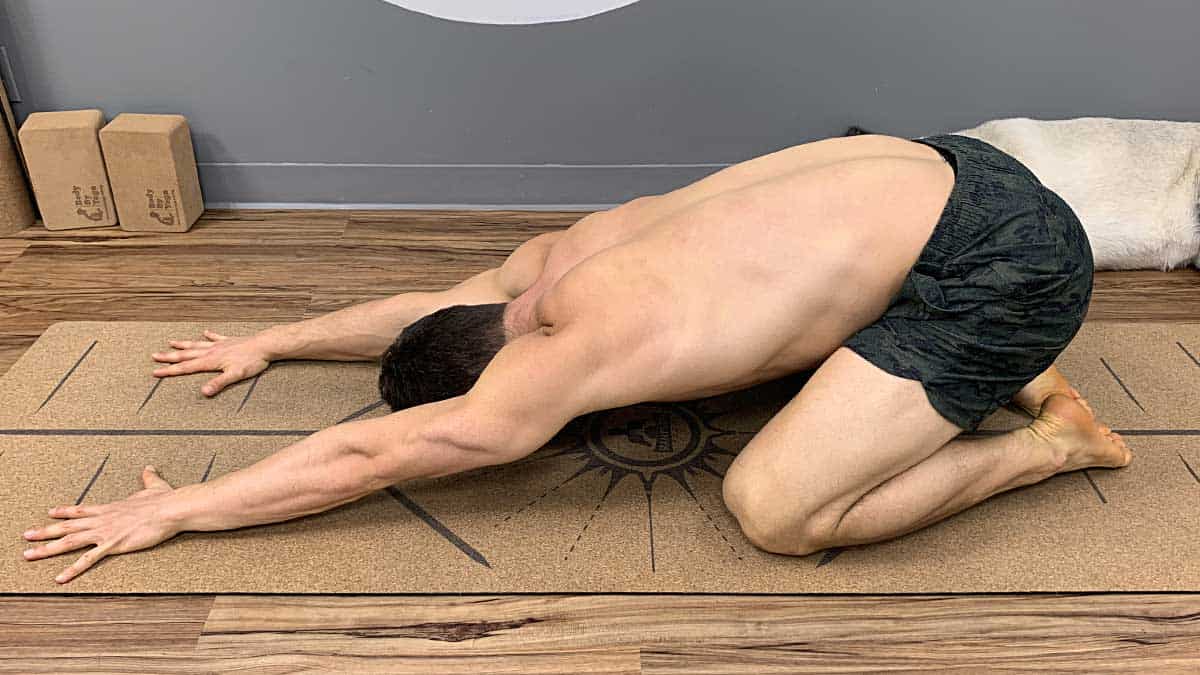
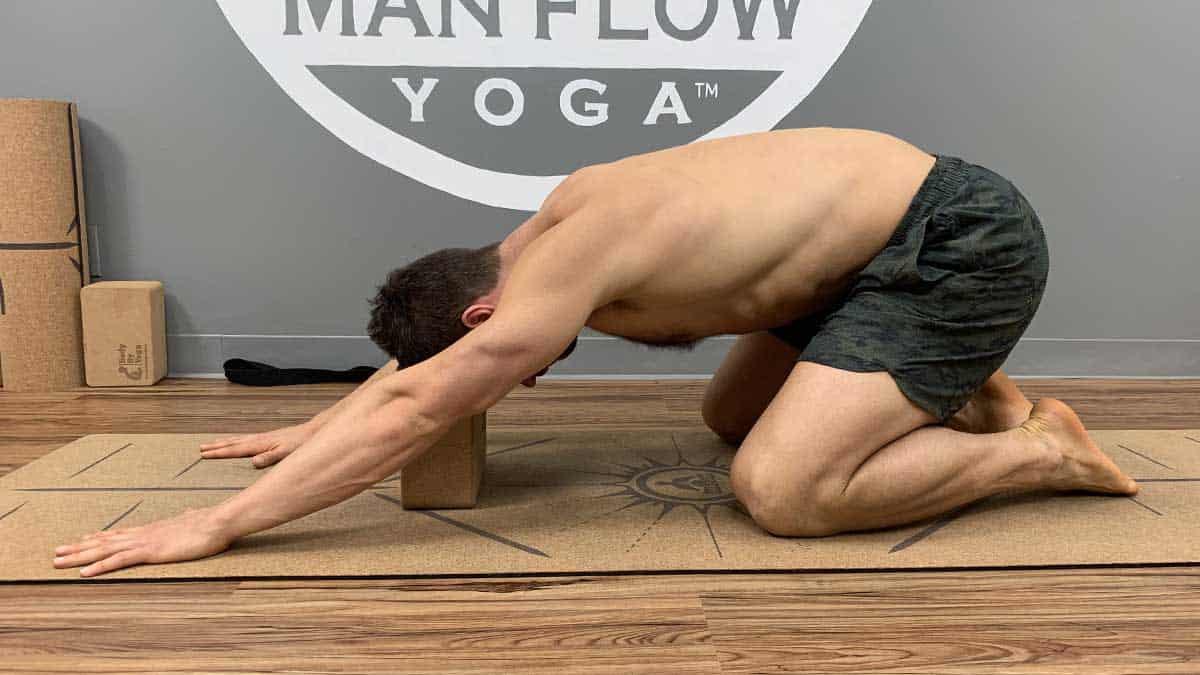
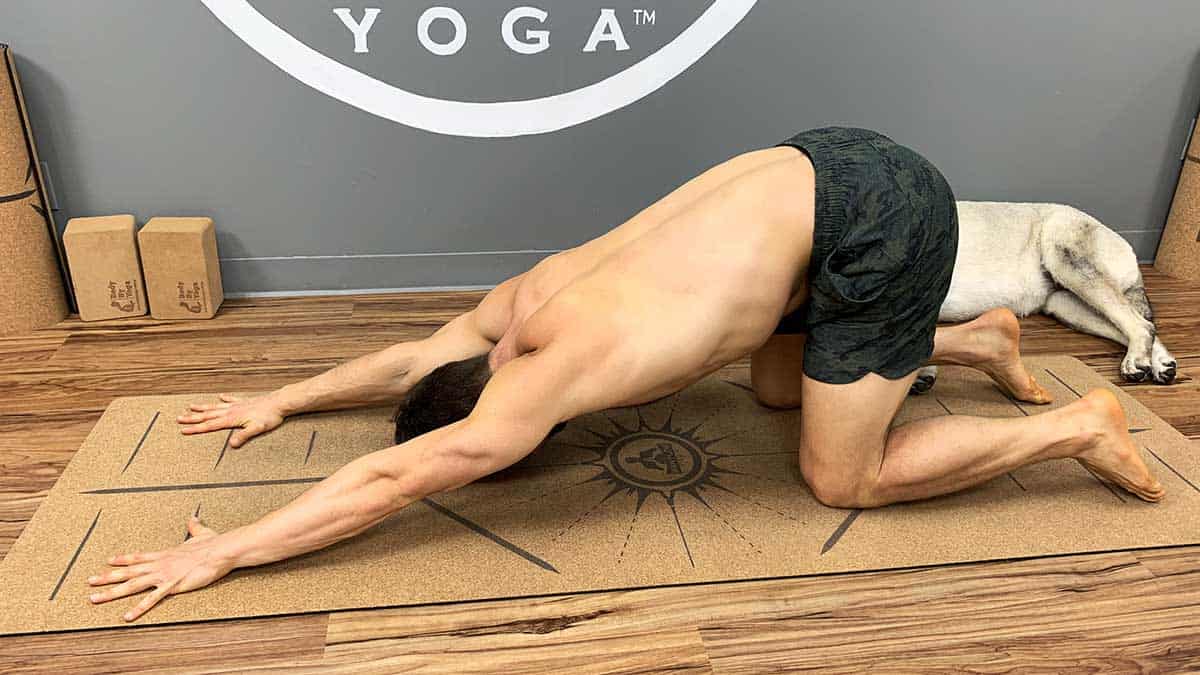
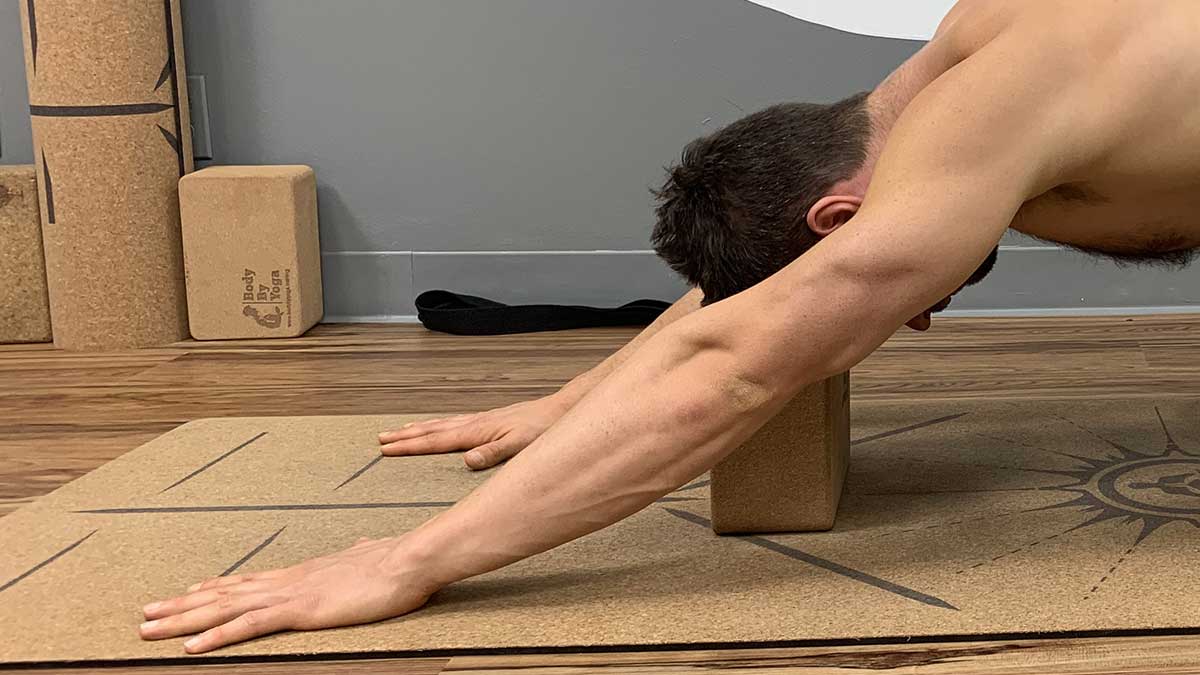
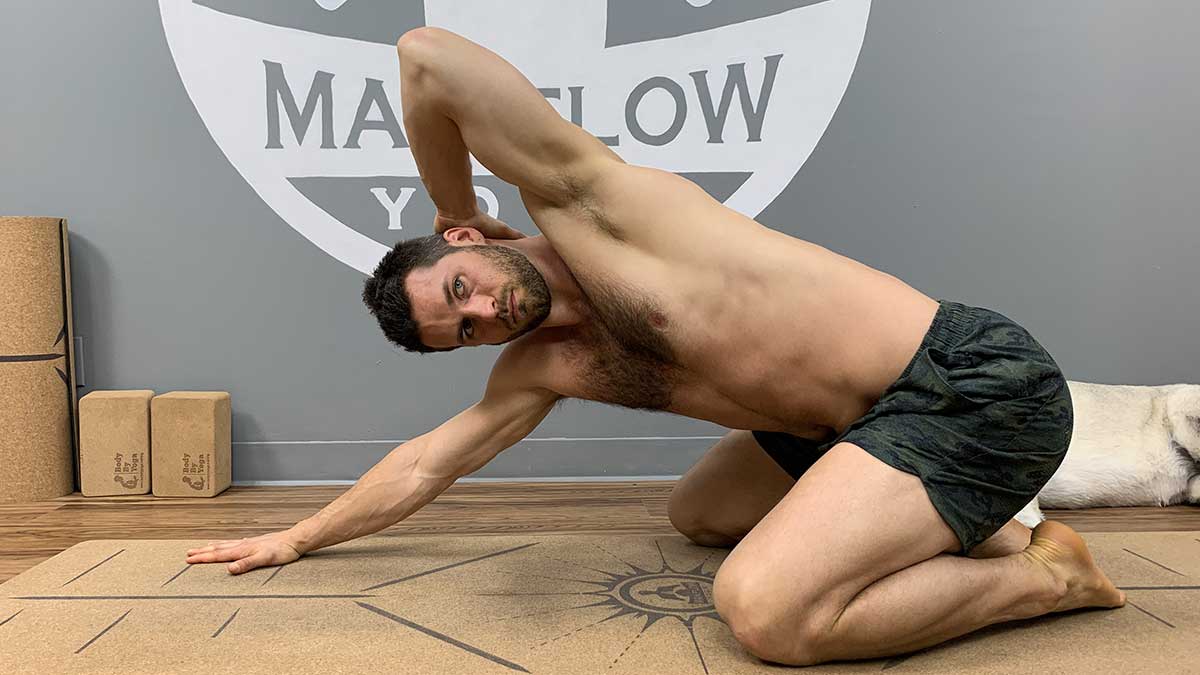
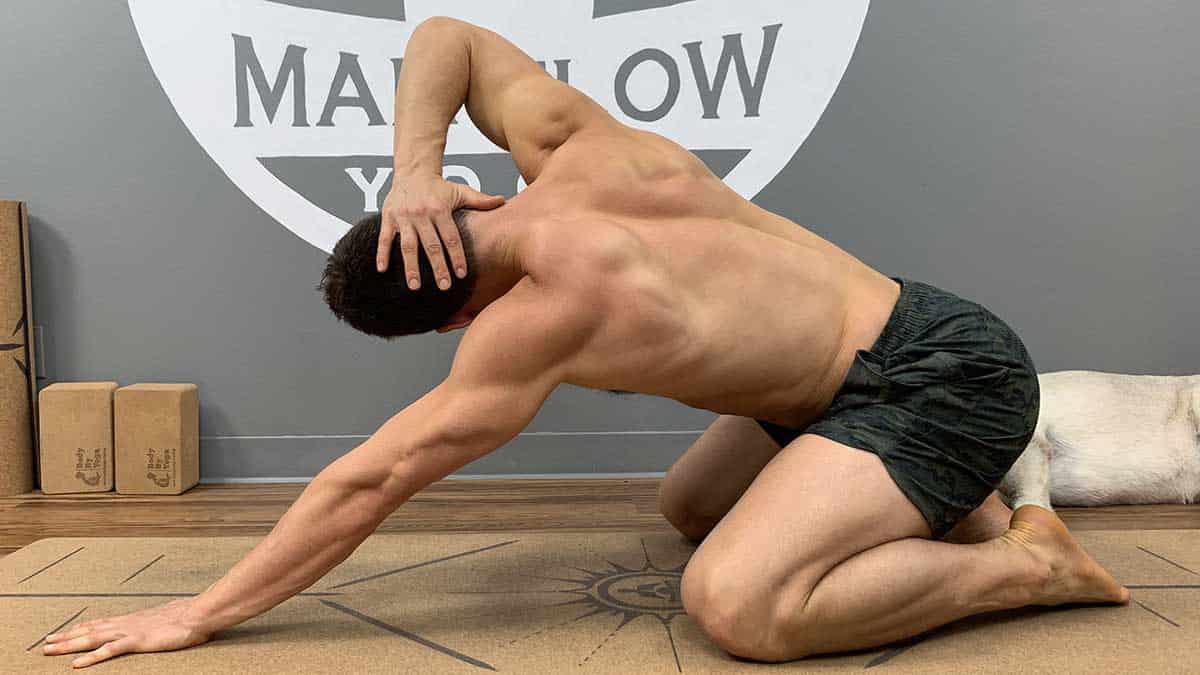
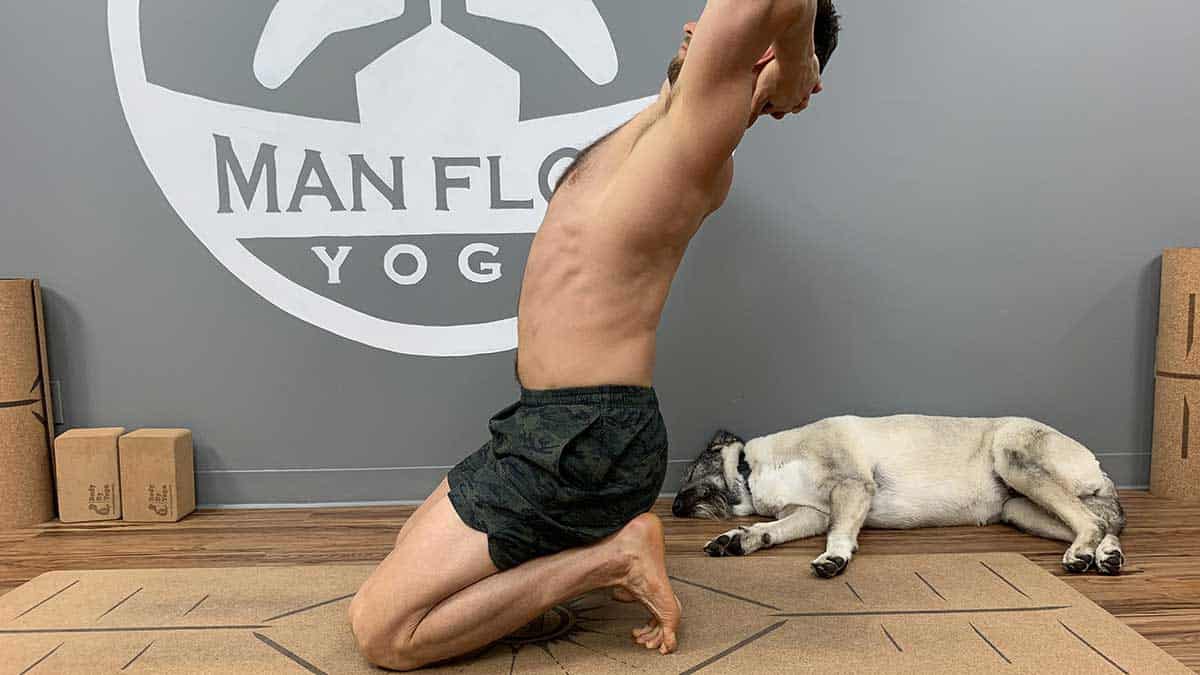
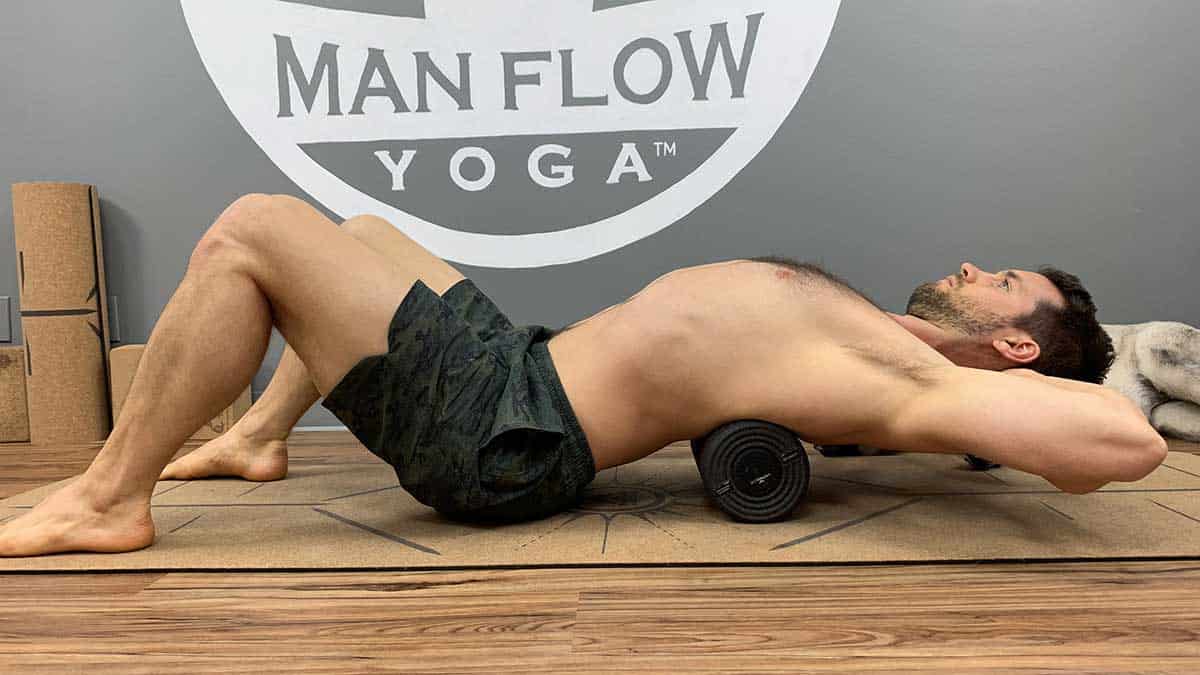

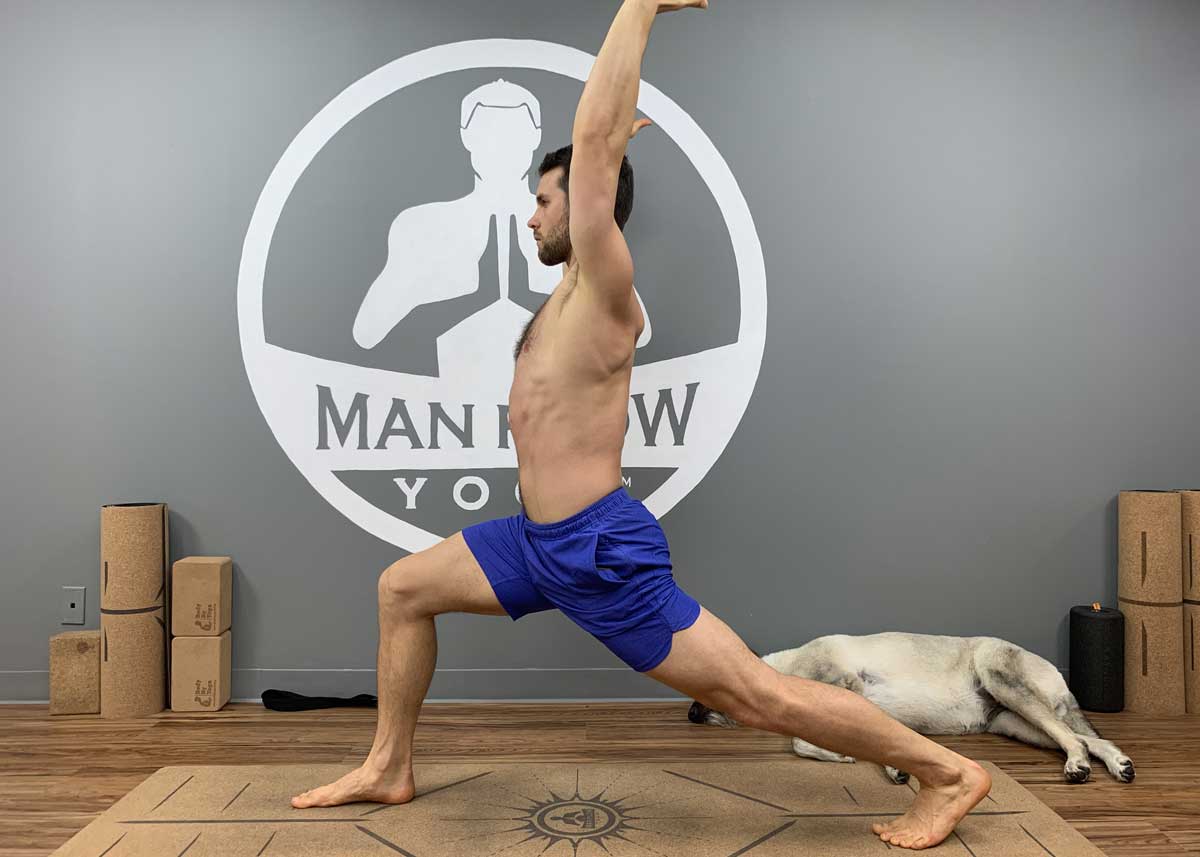

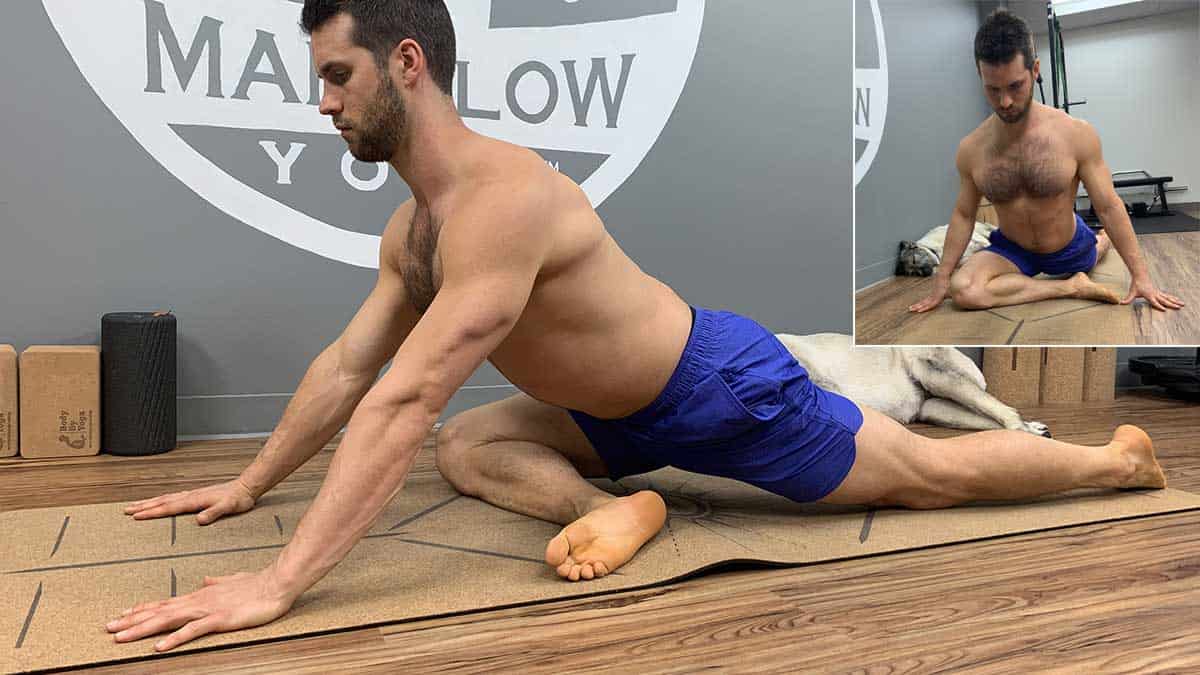
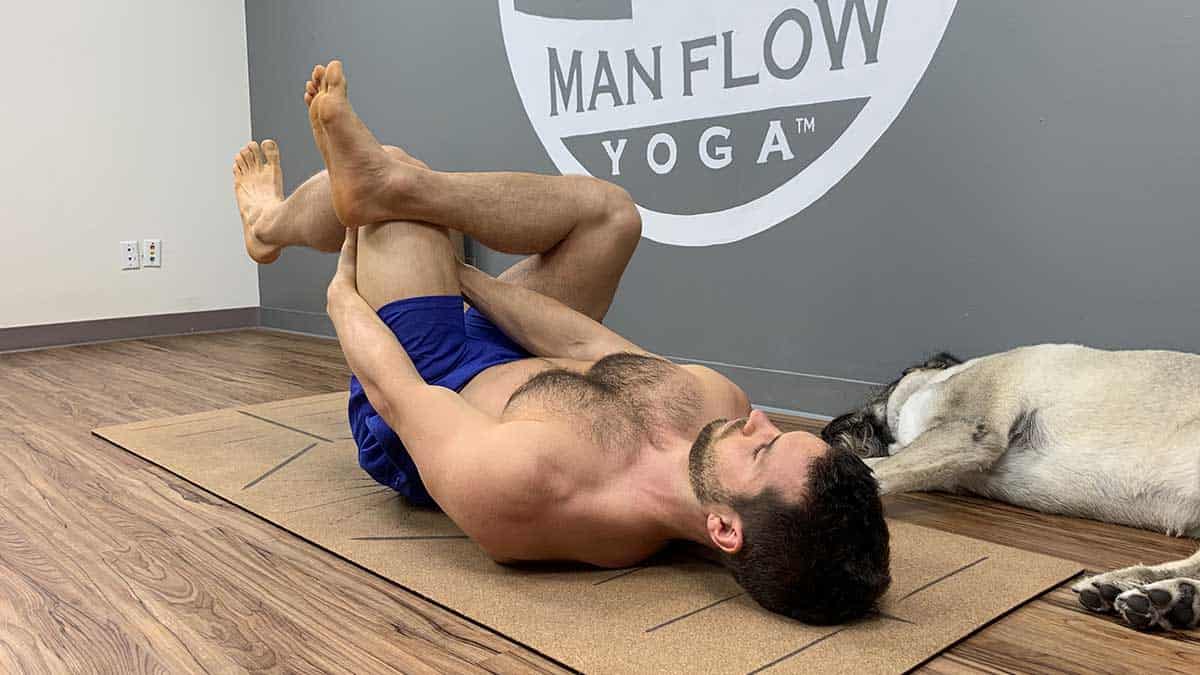
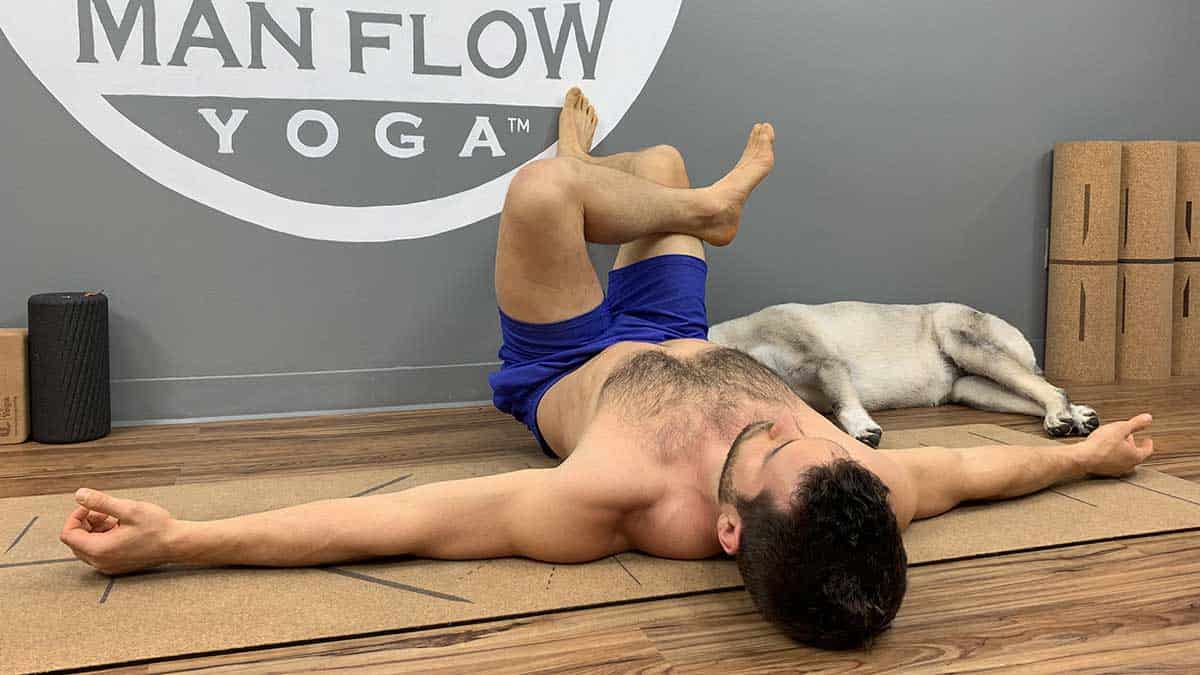
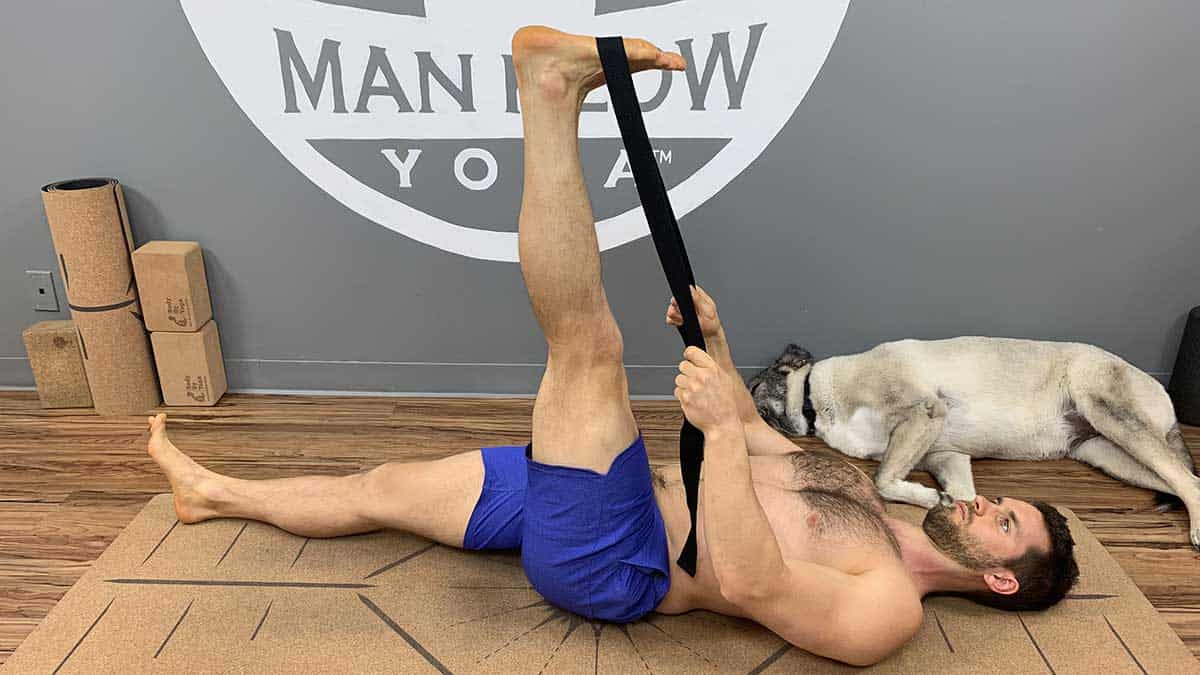
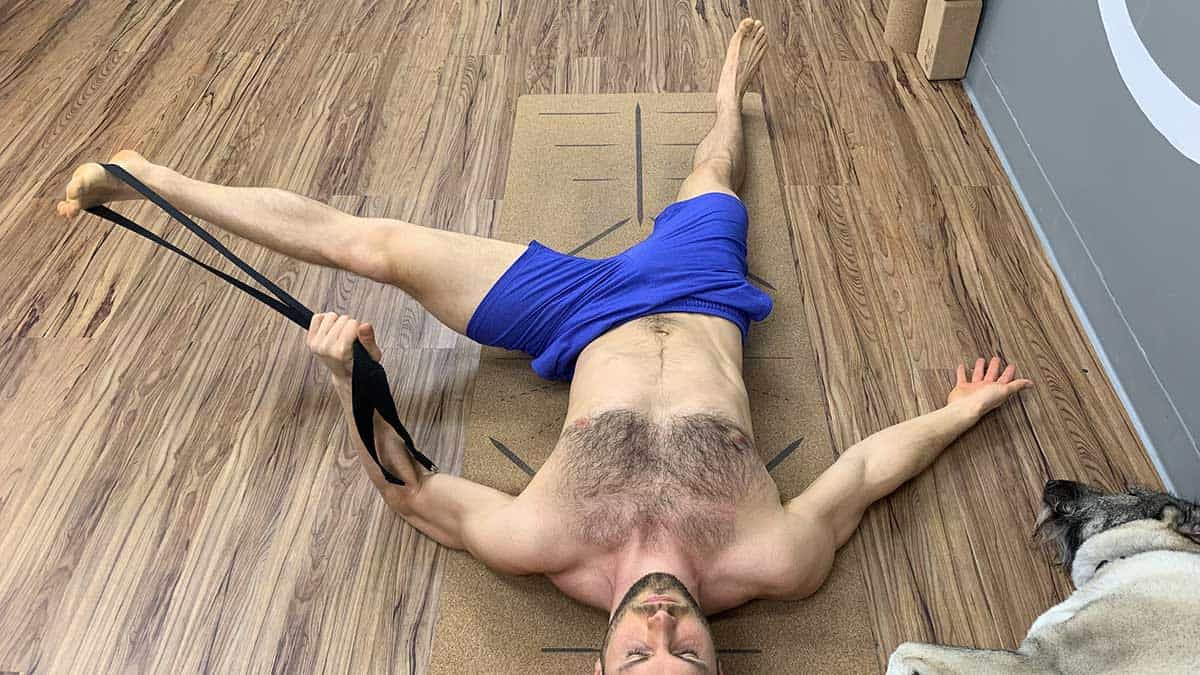
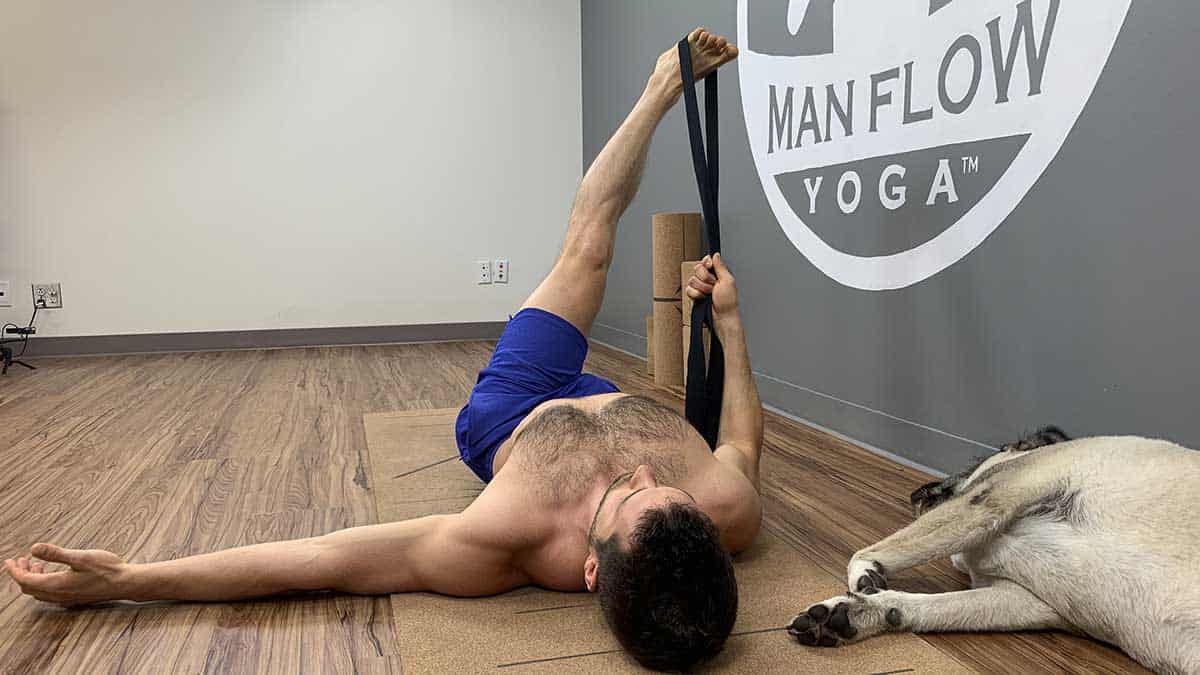
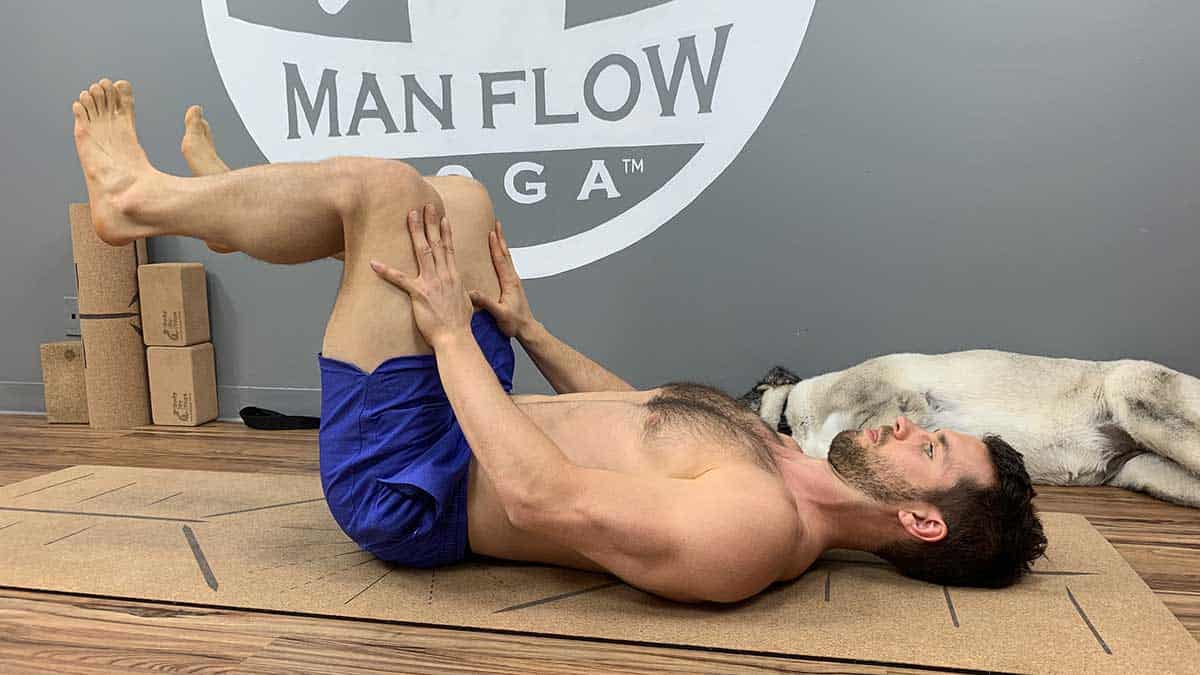
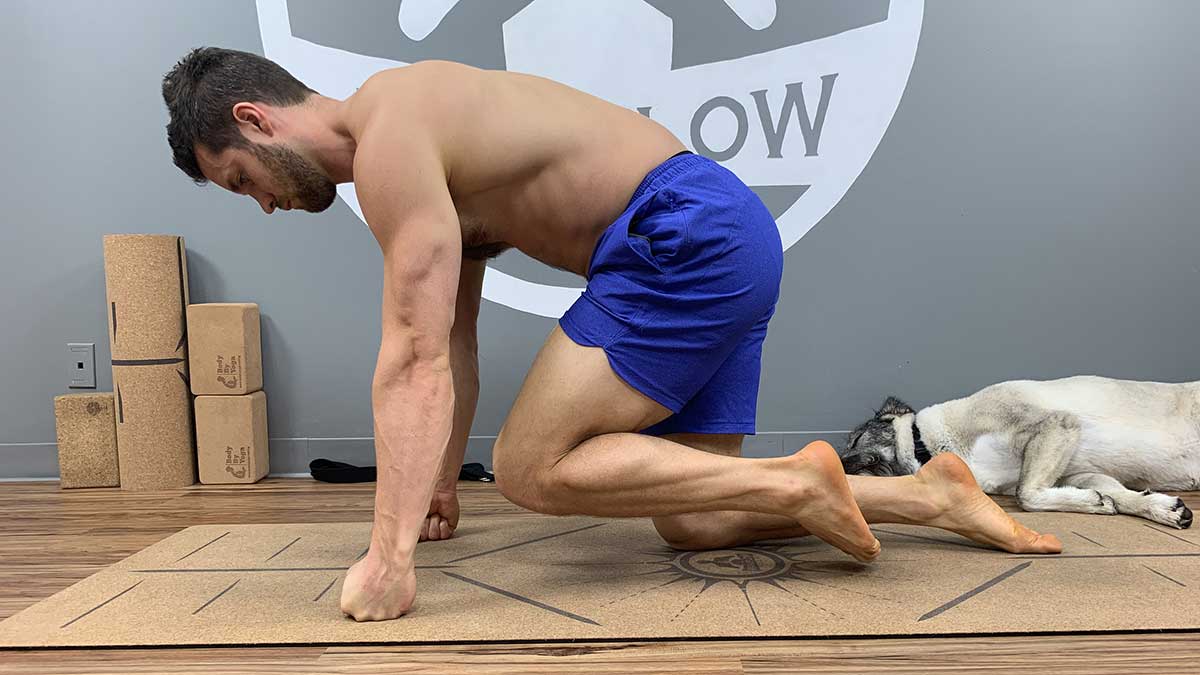
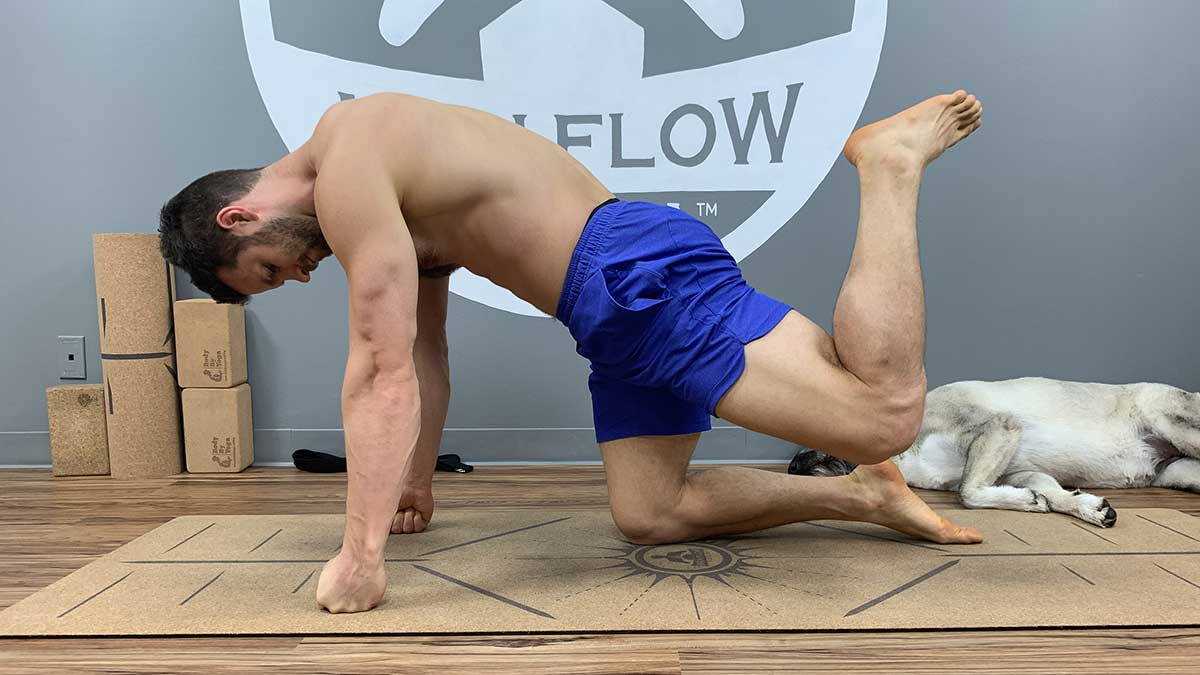
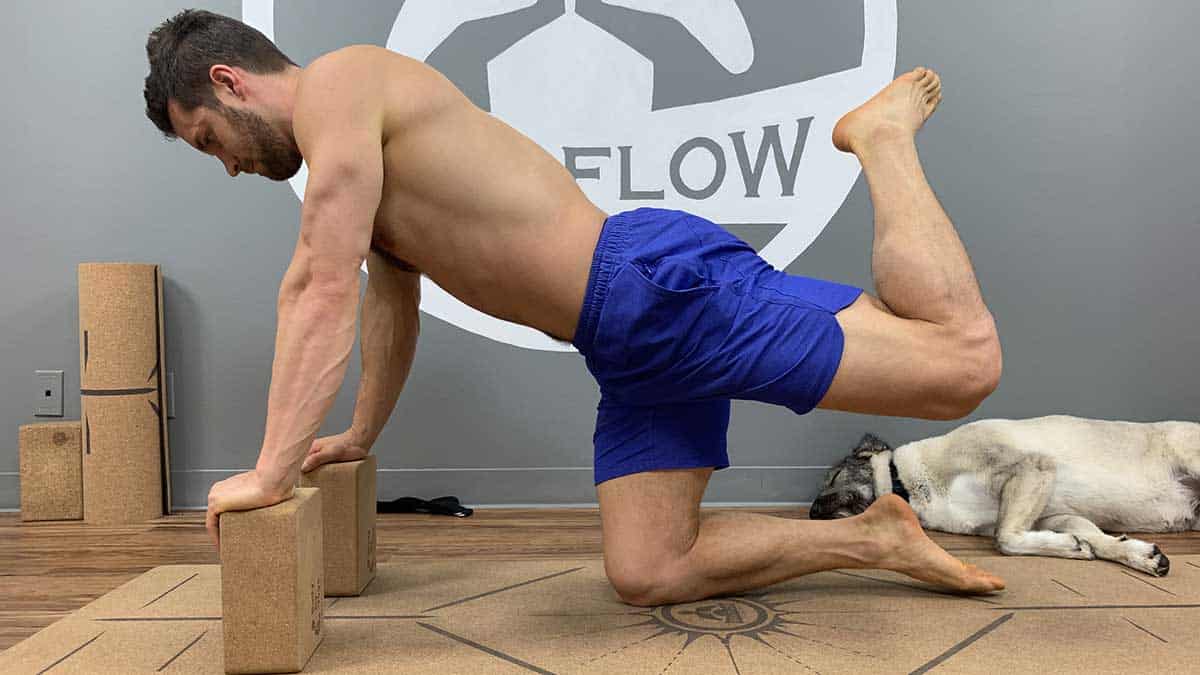
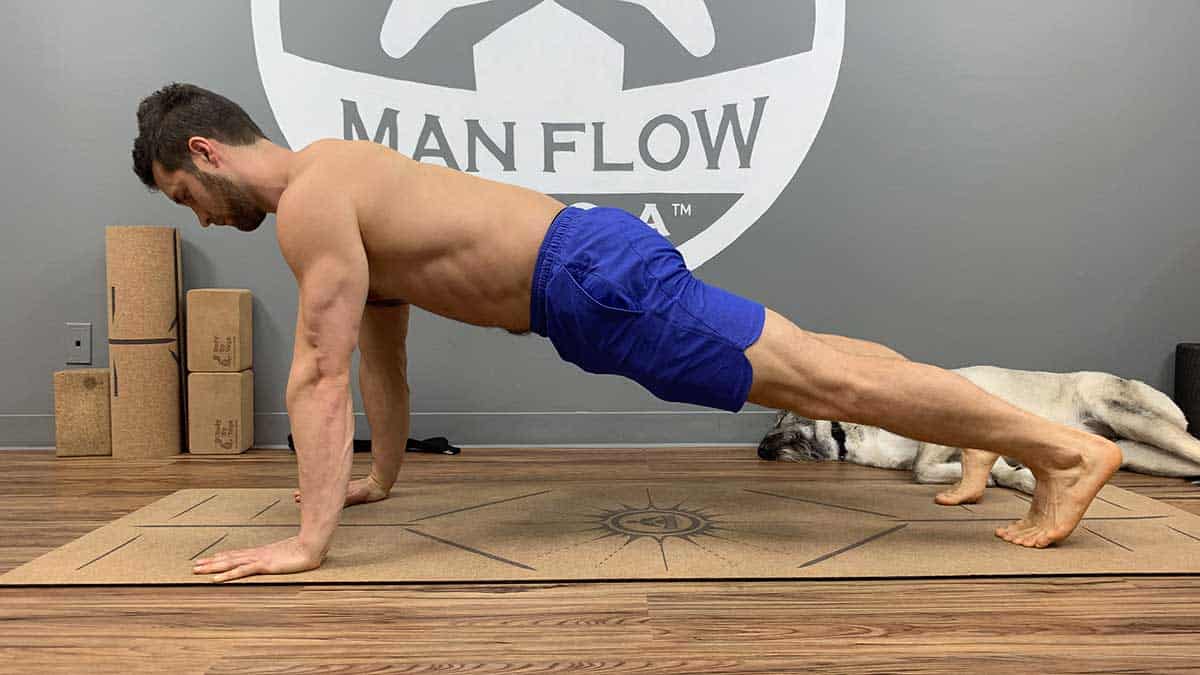
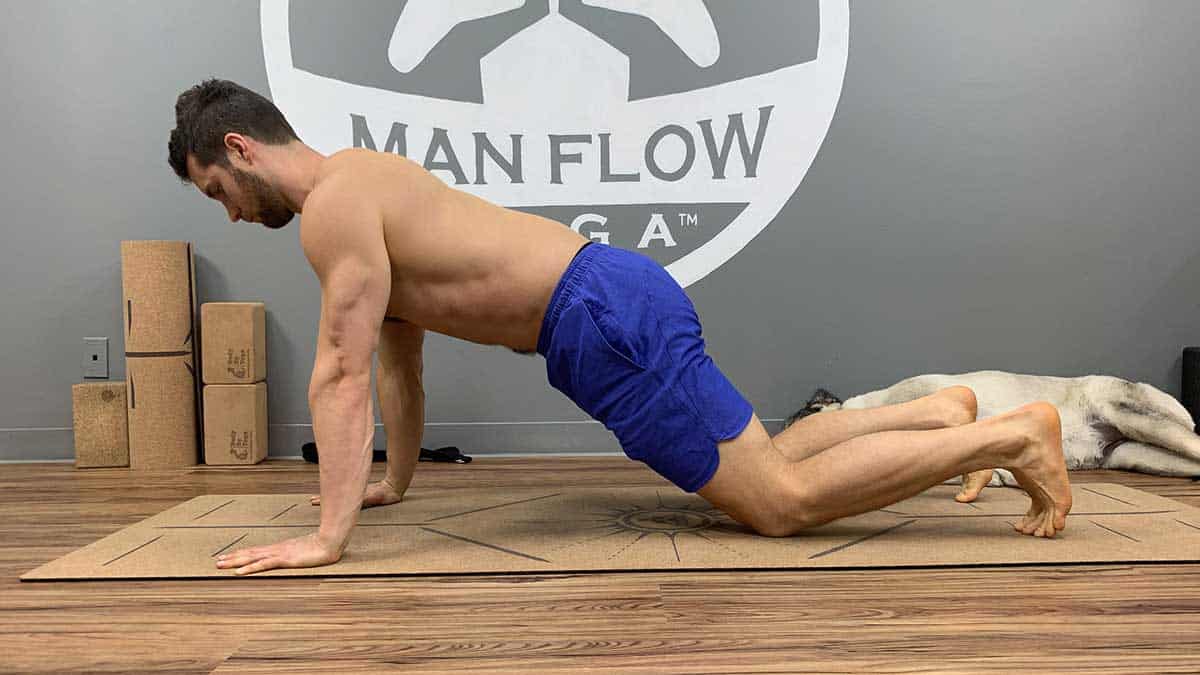
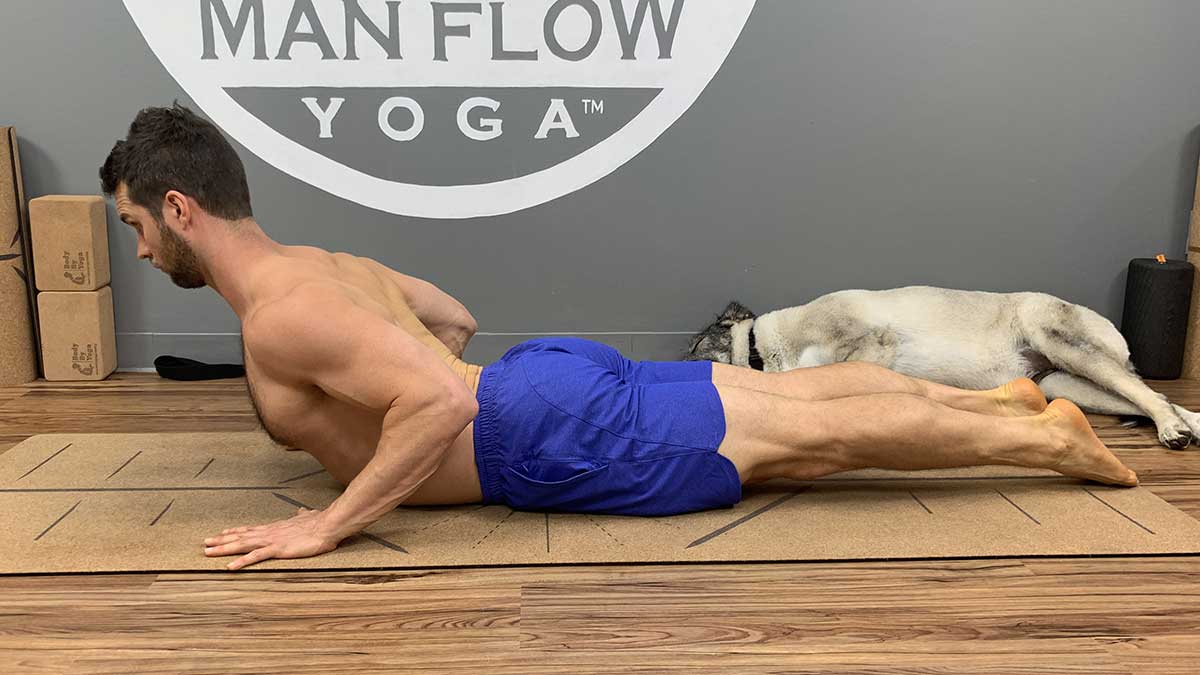
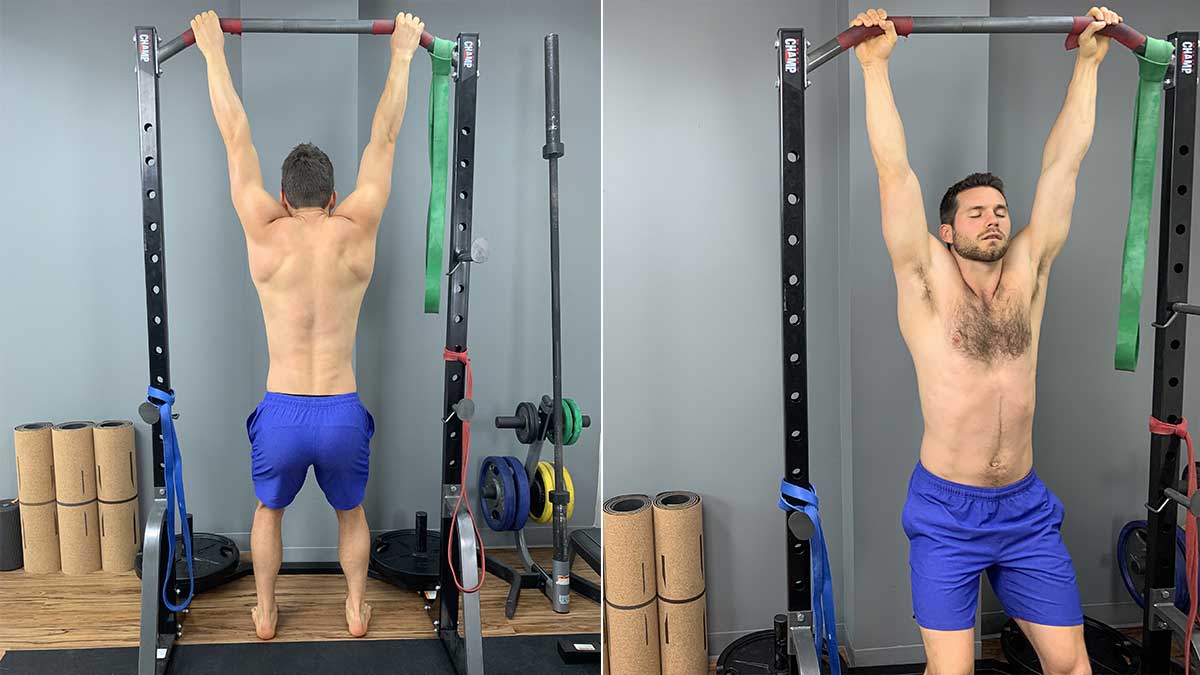
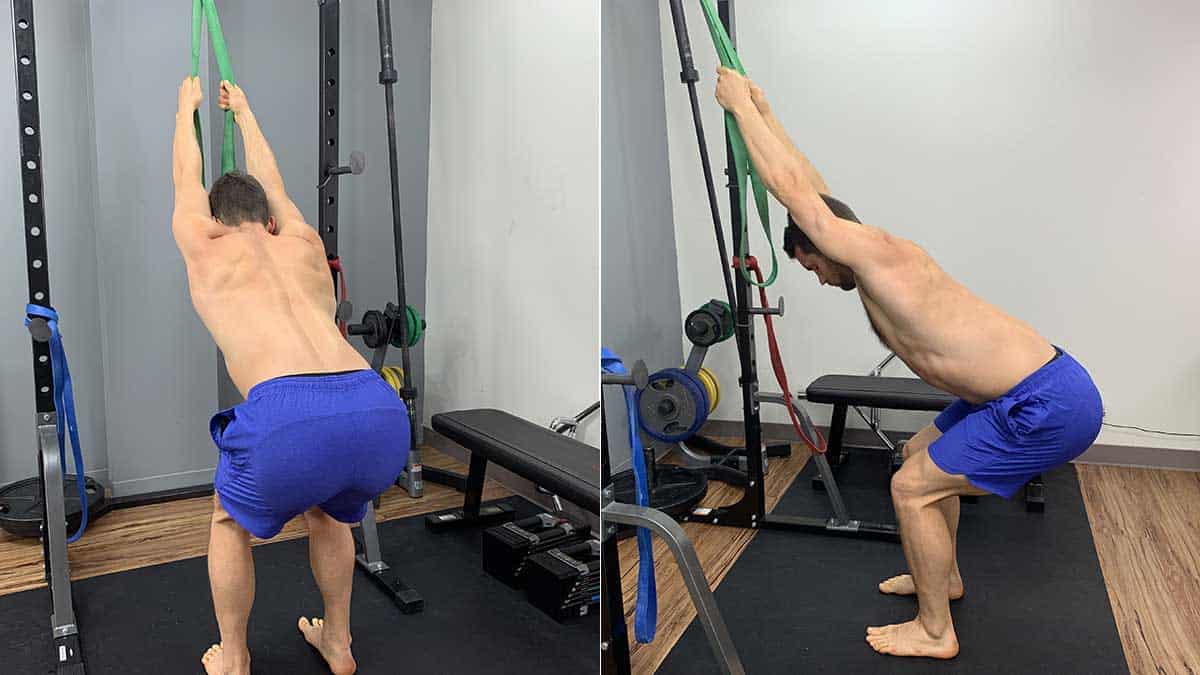

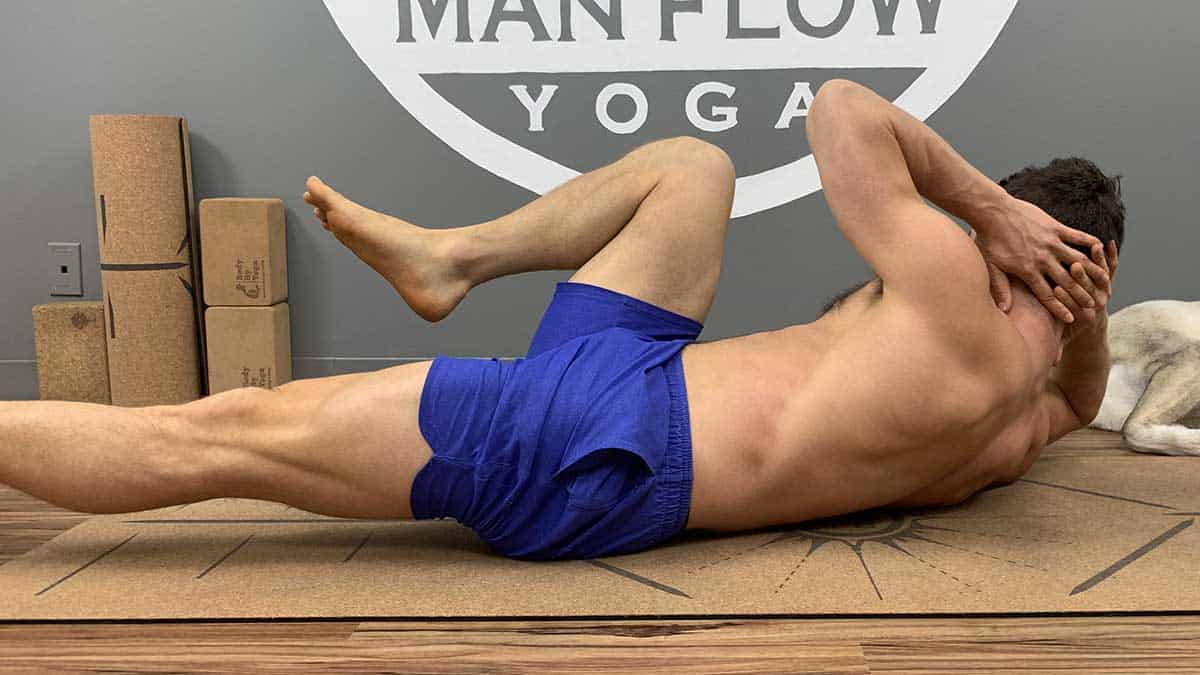
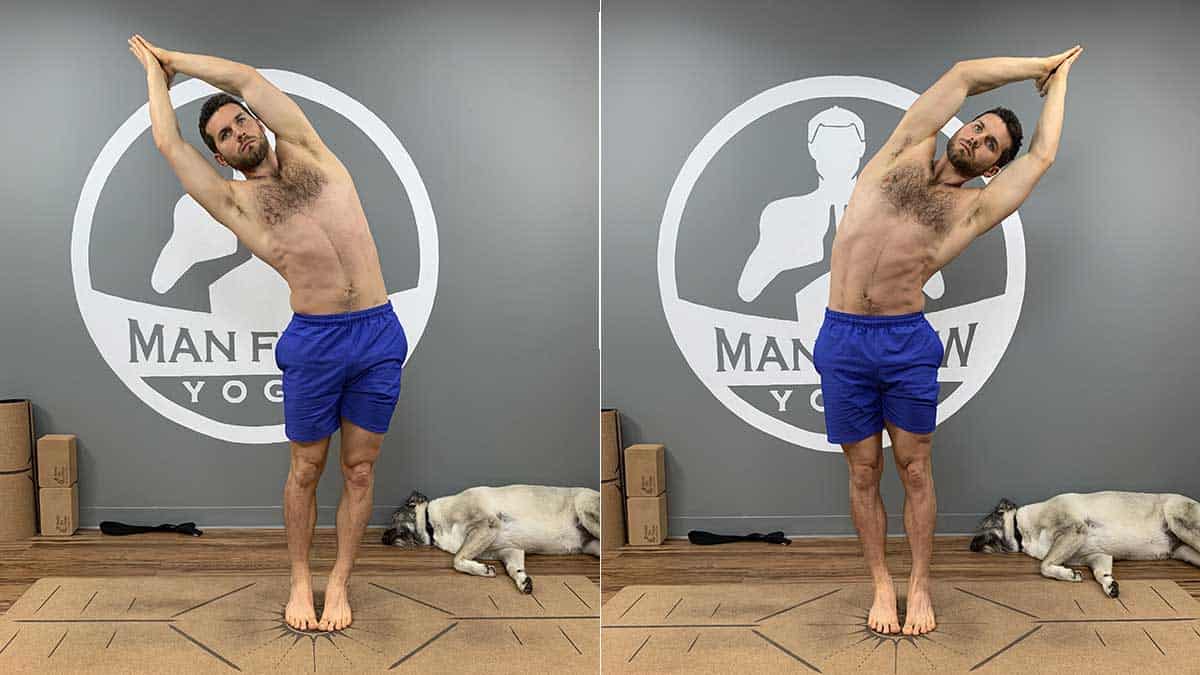
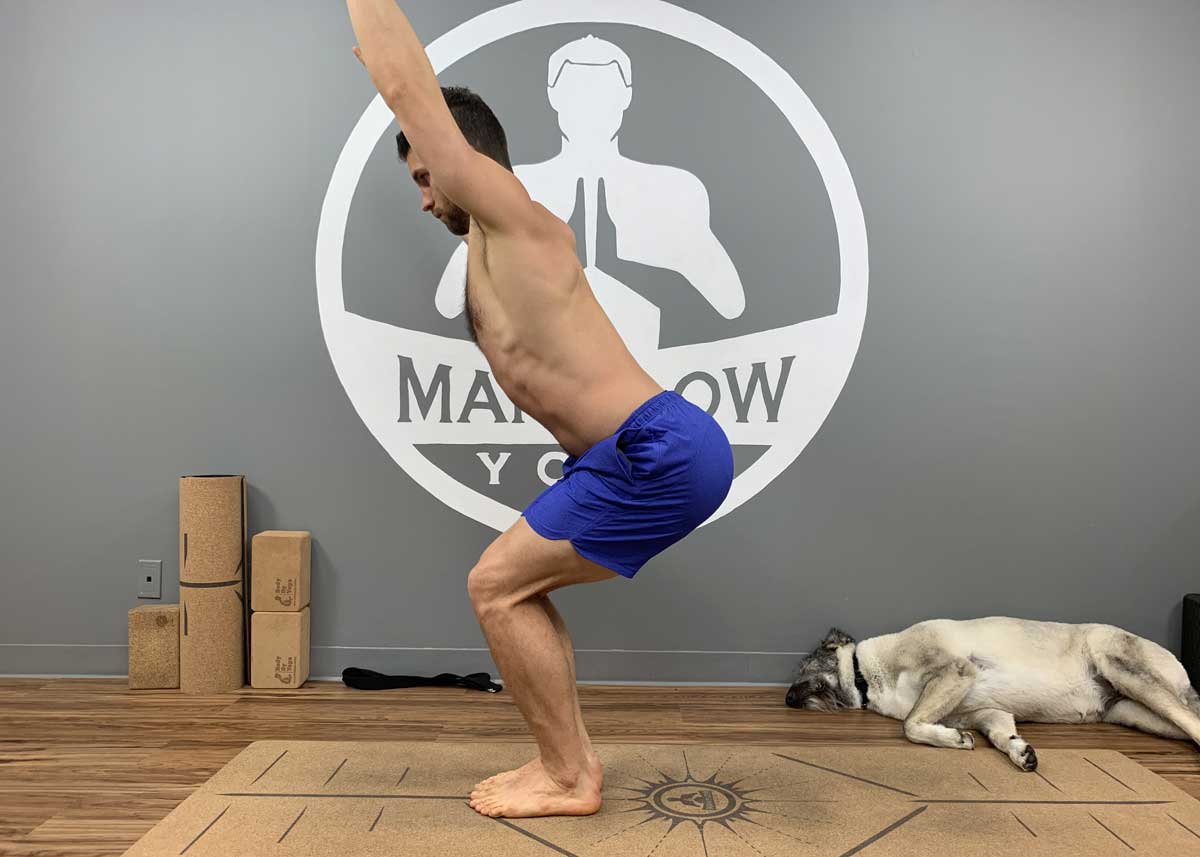
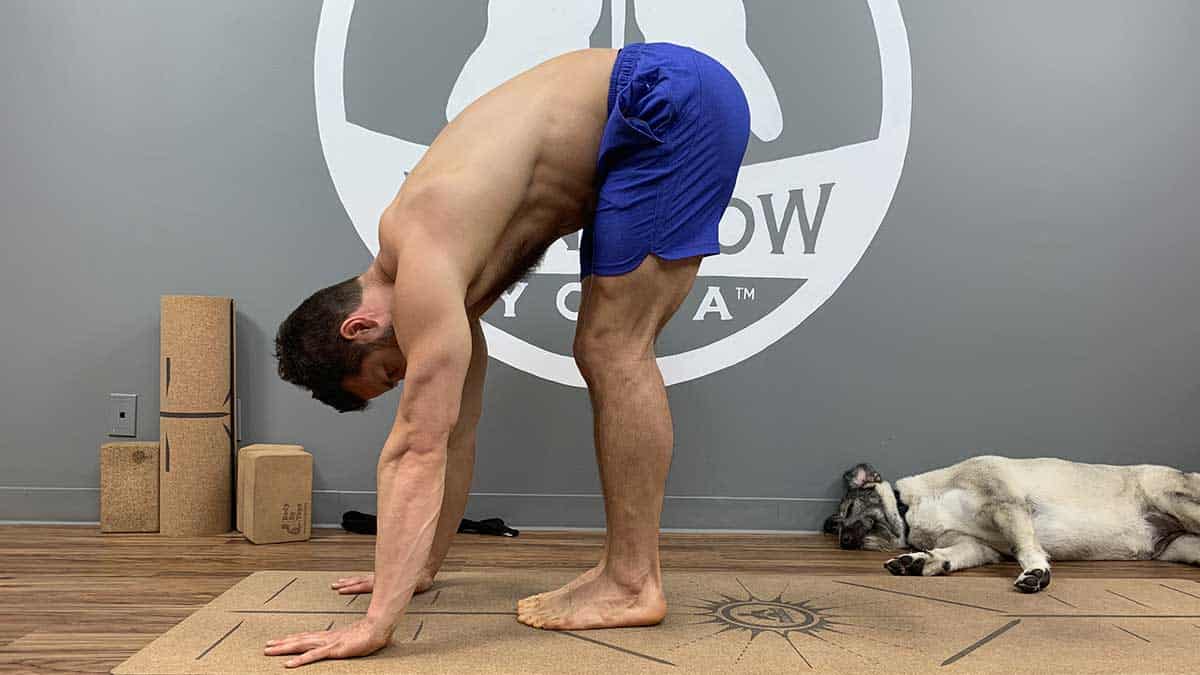
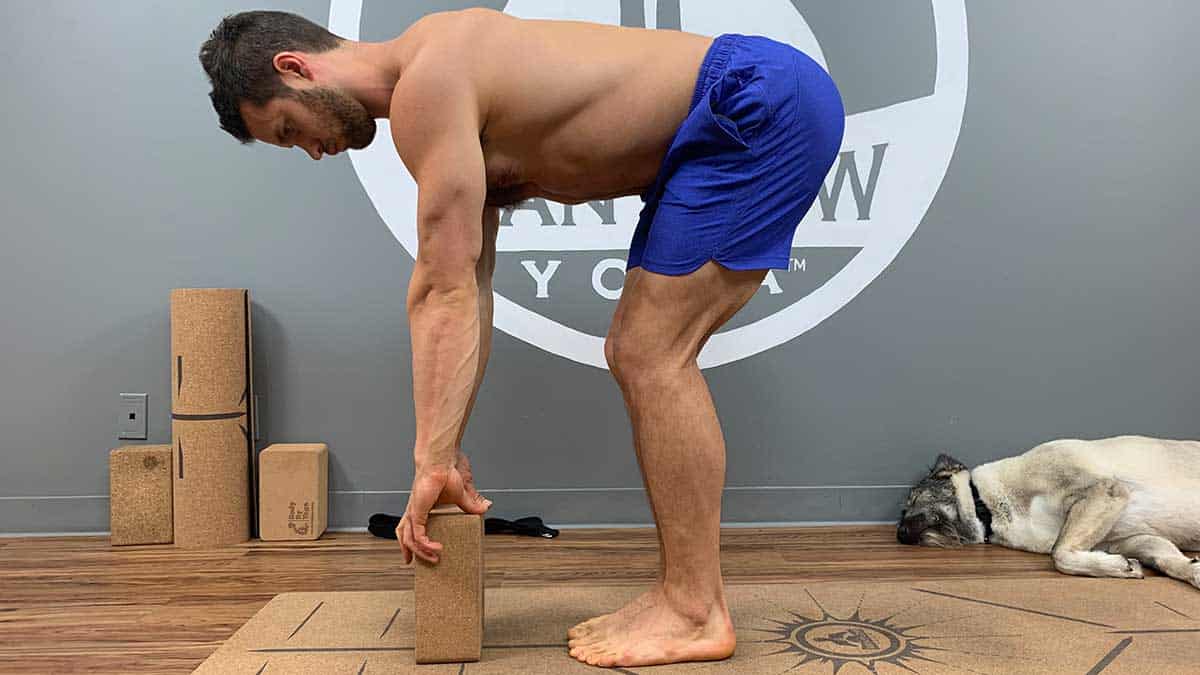
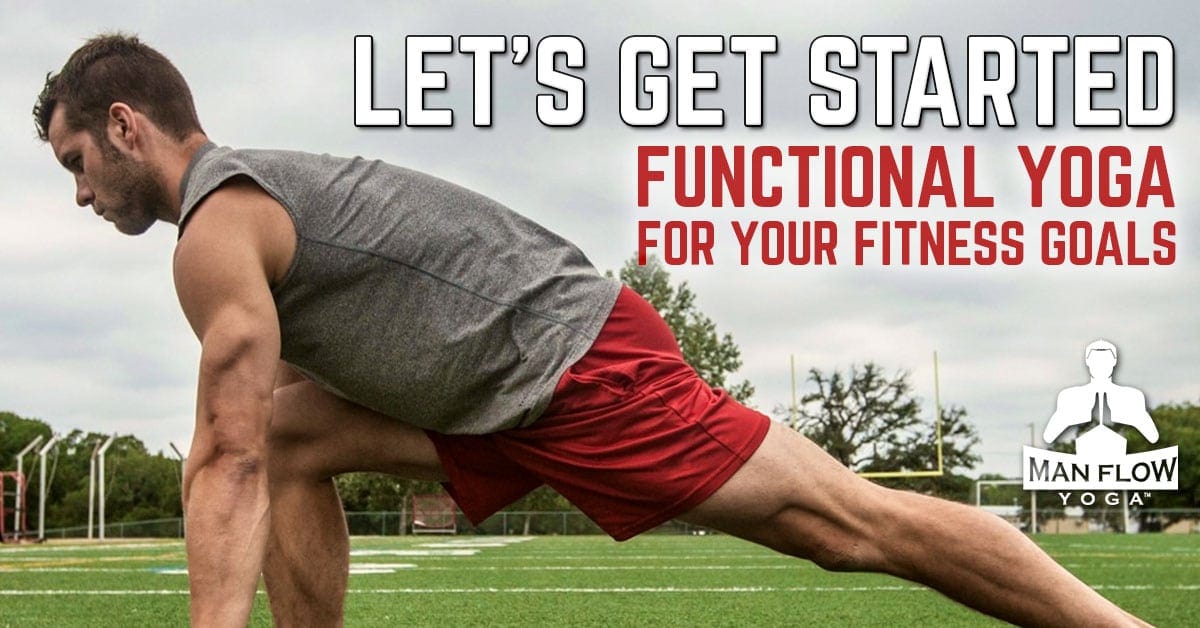
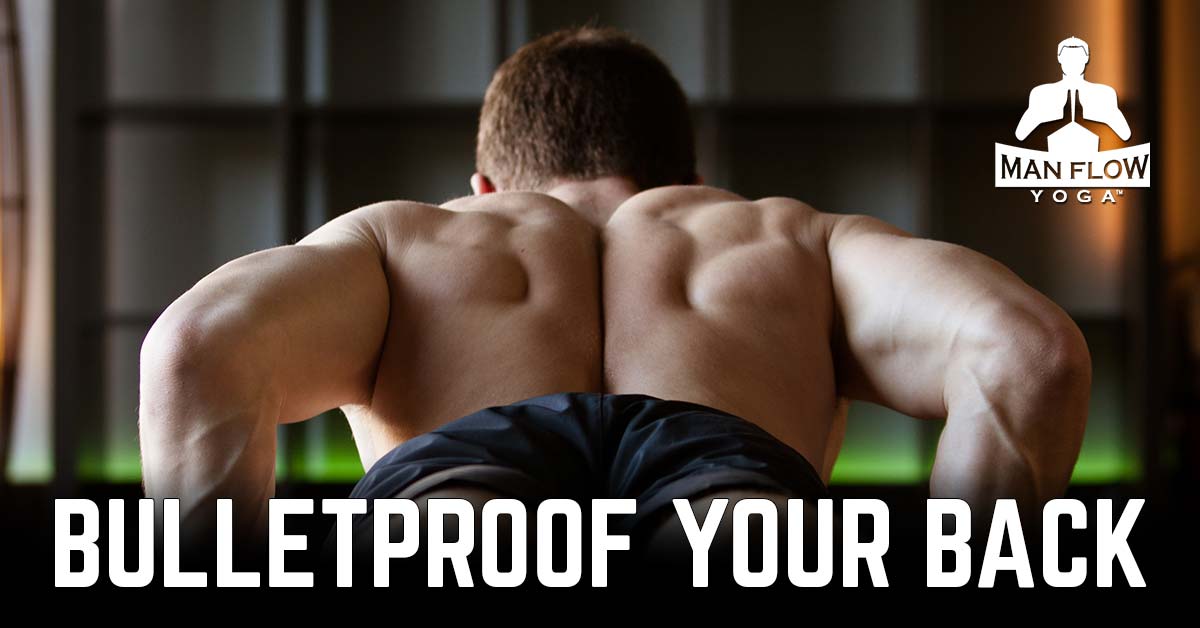
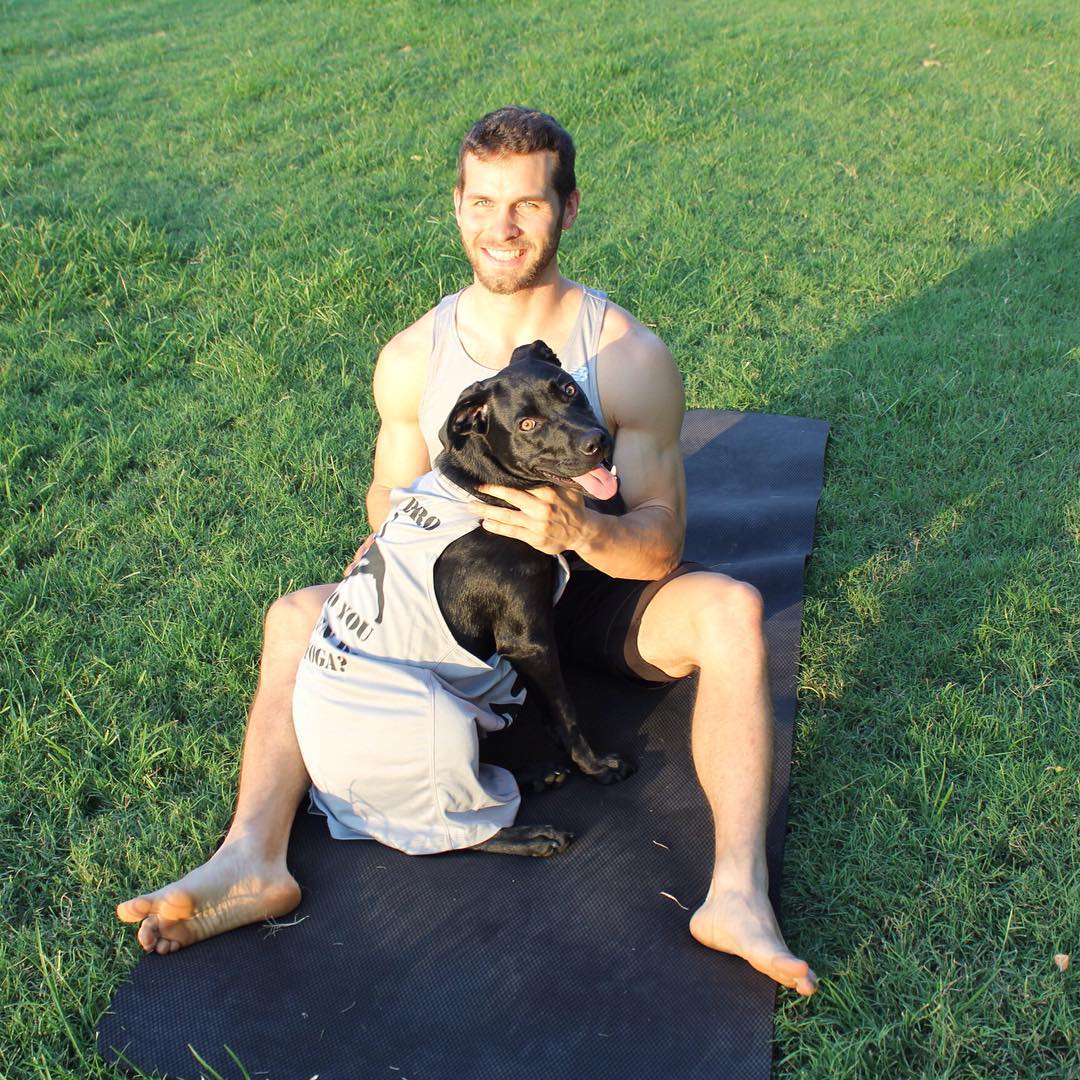
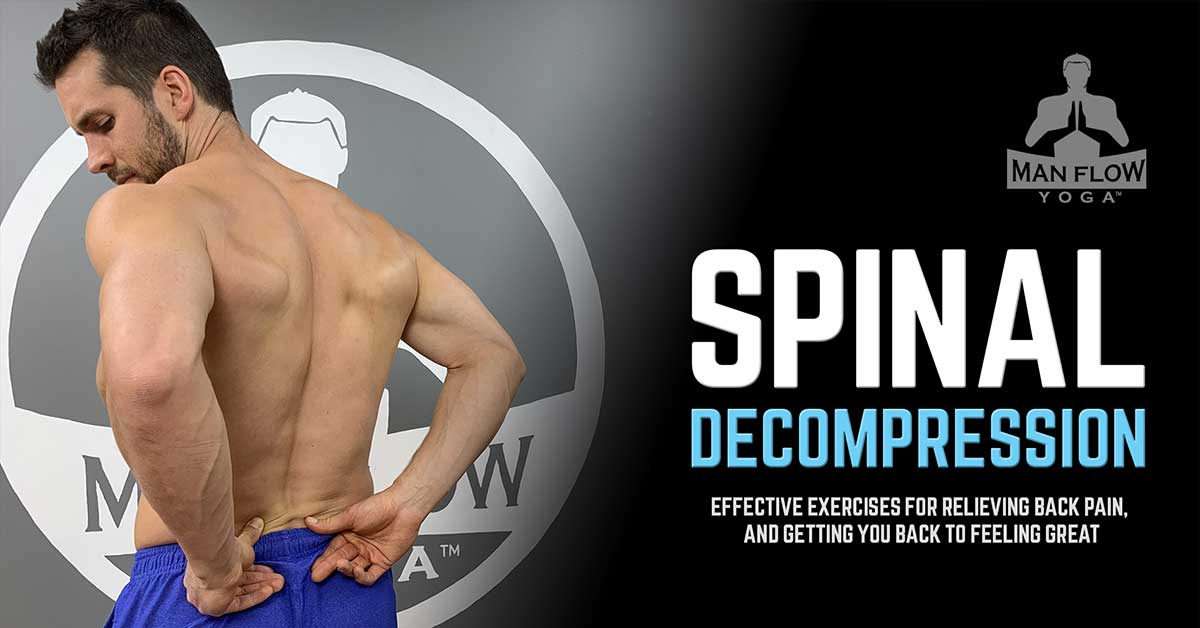
This is superb, Dean. Very comprehensive and very generous of you to share so much. Thank you.
Thanks, Mark! Glad you were able to get something out of it. Make sure to share it with a friend next time they’re having back pain. 😉
Ton of info in a nutshell! Thank you for your hard work and for sharing.
Thank you, Micah!
Great information, Dean! Thank you for sharing this and explaining everything in such a simple manner.
Thank you, Cole!
Hi Dean, This post is amazing! I bet you put a lot of effort into it. Thank you for sharing this. They are awesome.
Thank you, Weep!
Thank you for all the work you put into this! So helpful! I’ve had back pain for a long time and am excited to try this out.
Hey Maggie – this will definitely help! Just make sure you’re being consistent with the exercises, and try to move more often. 🙂
I’m so happy to have found this, Dean! I have sciatica and have tried massage therapy, physical therapy, acupuncture, and advanced manual physical therapy, all providing temporary and limited relief.
I’m so interested to see how much of the PT I received for my lower back pain overlaps with your descriptions here and exercises in other workouts. Very informative. While I don’t have the intense back pain I have had, I know doing these workouts and stretches will be preventative and build the strength I need. Thanks, Dean!
Hey Jeff – there is a TON of overlap between the workouts I create and the exercises prescribed from physical therapists. It will definitely help your back pain, just make sure to be consistent with the exercises. Usually at least 3x per week.
Hello Dean, and happy new year. This is a thorough article that I will revisit time and again due to my work. May I recommend that at the beginning you include a primer on what “spinal compression” is (as related to this article) and why it may be affecting you? I googled it and the first hits were “spinal cord compression” — I think this is related to the “spinal compression” in this article, but I’m not completely sure. The second hit was “spinal compression fracture” which I think is more of an acute injury.
Thanks!
Leo
Great idea, thanks for suggestion. We typically do add an intro, I’m not sure why I didn’t do something similar for this one.
I have a question / thing to add to this. I do full contact armoured combat and frequently train wearing large amounts of weight (50lbs or more on my 185lb frame). I do a lot of core work and spine lengthening exercises to avoid injury / pain, and in my estimation the discomfort I feel from the added weight is similar to what I would feel if I was sitting for long periods and not exercising. My training regimen gives me a keen advantage but I’ve gotten mixed answers from veterans on the toll this will take on my body long term. My thinking is that if I keep my core strong and exercise regularly and COOL IT if I do feel compression coming on, I will be fine if not stronger. Or am I going to just slowly descend into having a worn out back if I do this?
Great question. It’s hard to tell because every body is different but it does sound like you’re doing a good job keep the wear and tear at bay. That being said, it’s gonna take a toll on your body over time. Just like everything else, exercise, diet, and plenty of sleep is the best you can do. And the idea of cooling it when you feel pain is definitely key!